Cuzco, Peru is a wonderful place to park yourself and explore for a few days. That’s exactly what Lori and I did and would return in a heartbeat.
From wandering the alleyways of San Blas and soaking up the history of Plaza de Armas, to sampling the region’s tasty cuisine and making the arduous climb to see Jesus, here is our trip report (with some helpful tips we picked up along the way).
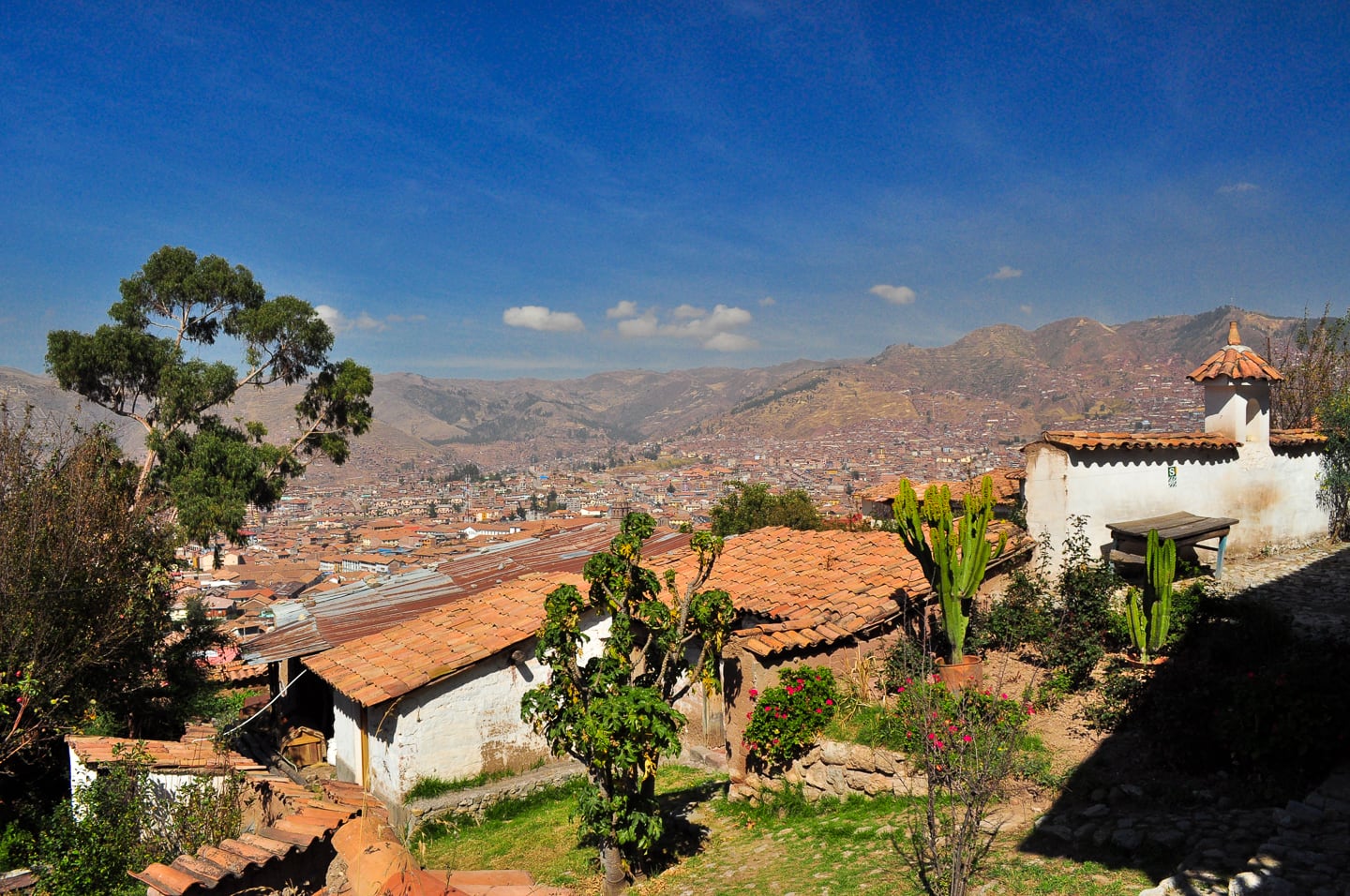
Cuzco Acclimatization
Yesterday was our day of rest following a long travel day to Cuzco, Peru (Cusco).
Today, we hoped to get some laundry done (US$2 for nearly everything we brought!), check out some of the ruins just outside of town, and see if we can get to one of the villages in the Sacred Valley (Valle Sagrada) before embarking on our 3 night, 4 day Inca Trail trek on Friday.
Well, the day didn’t quite go as planned, but it was for the better.
We did get our laundry done, but didn’t make it to the ruins in the Sacred Valley. However, we found there was more than enough to keep us busy in and around the charming and history-laden city of Cuzco.
In retrospect, our low key approach was probably for the best given that we’ll need to save our legs for the 40 km Inca Trail trek (and will likely get our fill of amazing Inca ruins along the way)
We stayed in Cuzco for three nights prior to starting our Inca trail trek. We planned on this as a way to acclimatize to the high elevation and the strenuous hiking ahead, but found that our gradual ascension over the previous week, along with our Colca Canyon trek from Arequipa, had already acclimatized us greatly.
I believe that our approach directly impacted on our ability to enjoy hiking the Inca trail at times when our fellow hikers were struggling with the altitude and terrain.
From my understanding, most people who hike the Inca trail fly directly into Cuzco, or take an overnight bus from Lima just days before their hike.

While I appreciate that we had the luxury of time while others may not, I’d strongly recommend our approach (Lima => Arequipa => Colca Canyon => Cuzco over 7-10 days) for maximum enjoyment.
If you’re going to spend the money to fly down to Peru and hike the Inca trail, you might as well go out of your way to enjoy it!
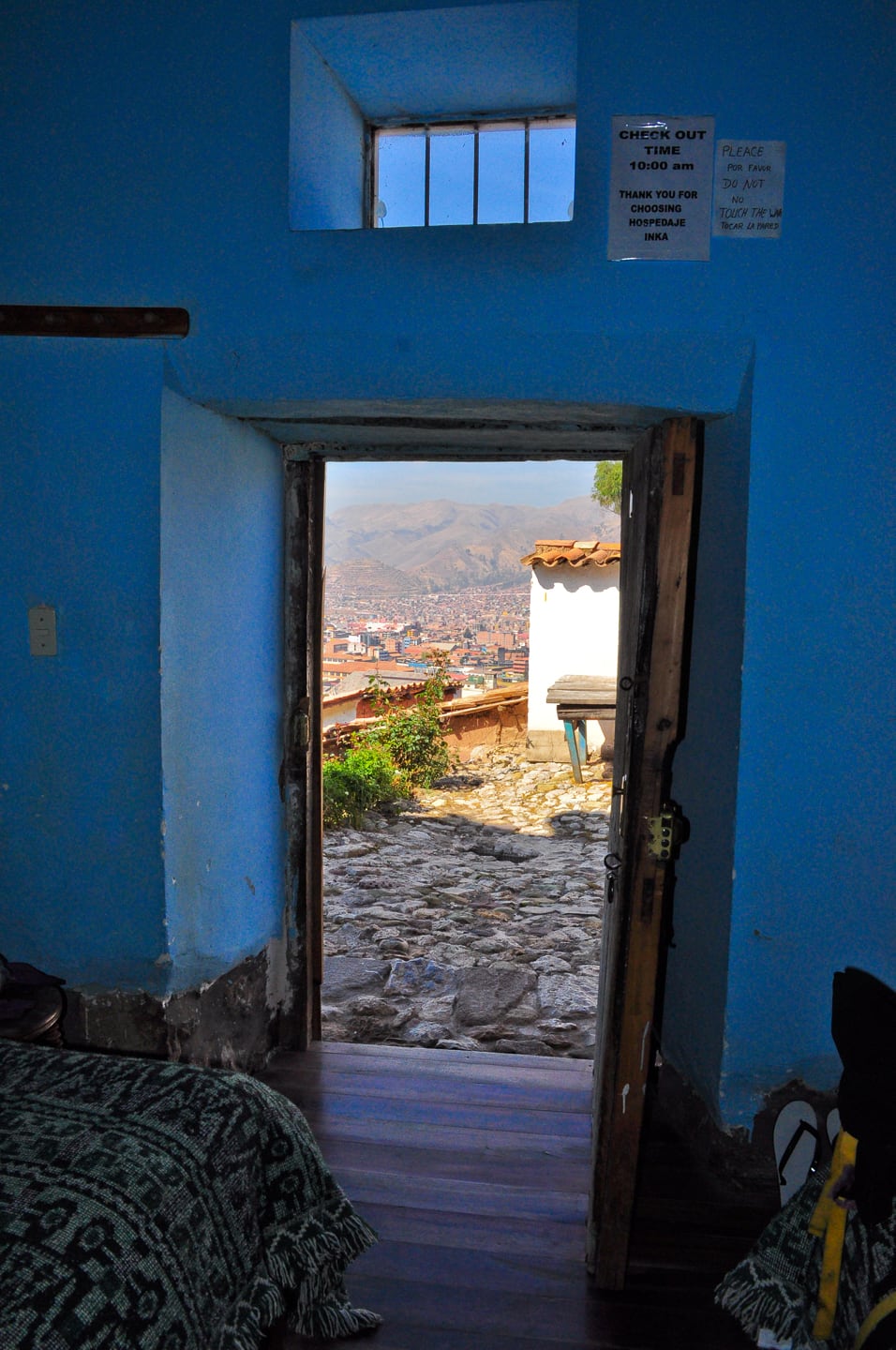
Hostels & Cuzco’s Hospedaje Inka
We spent three nights at Hospedaje Inka and loved it.
Perched above Cuzco’s historic San Blas neighborhood at the end of a narrow cobblestone street, Hospedaje Inka offered enough amenities to be comfortable without sacrificing a sense of place.
Stepping out of our room and being greeted by the brisk Andean air and the picturesque city of Cuzco spread out below, every step, every breath reminded us that we were indeed nowhere else in the world at this particular moment but Cuzco, Peru.
We got lucky with Hospedaje Inka. We got lucky a lot with hostels in Peru. For us, one of the absolute best things about backpacking is staying in hostels.
Sometimes you’re lucky, sometimes you’re very unlucky, but on the whole they tend to be serendipitous experiences—certainly not what you typically experience staying in big-name hotels.
Hostels nearly always give you a story to tell, for better or worse, but always a story. When was the last time you stayed at a Holiday Inn and came home with a story?
Not to say that there isn’t something to be said for staying at international-brand hotels in the U.S. Sadly, hostels are hit-and-miss in the States. Some are very bad, unclean, dangerous. Some are ok. I’ve stayed in some good ones in British Columbia.
Overseas, hostels give you an elevated chance of having a cross-cultural experience and meeting other travelers from all over the world who are often some of the nicest and most interesting people you will ever meet.
Some of my fondest travel memories came from hostels, pensiones, hospedajes, and “backpackers” I’ve stayed at in a variety of countries.
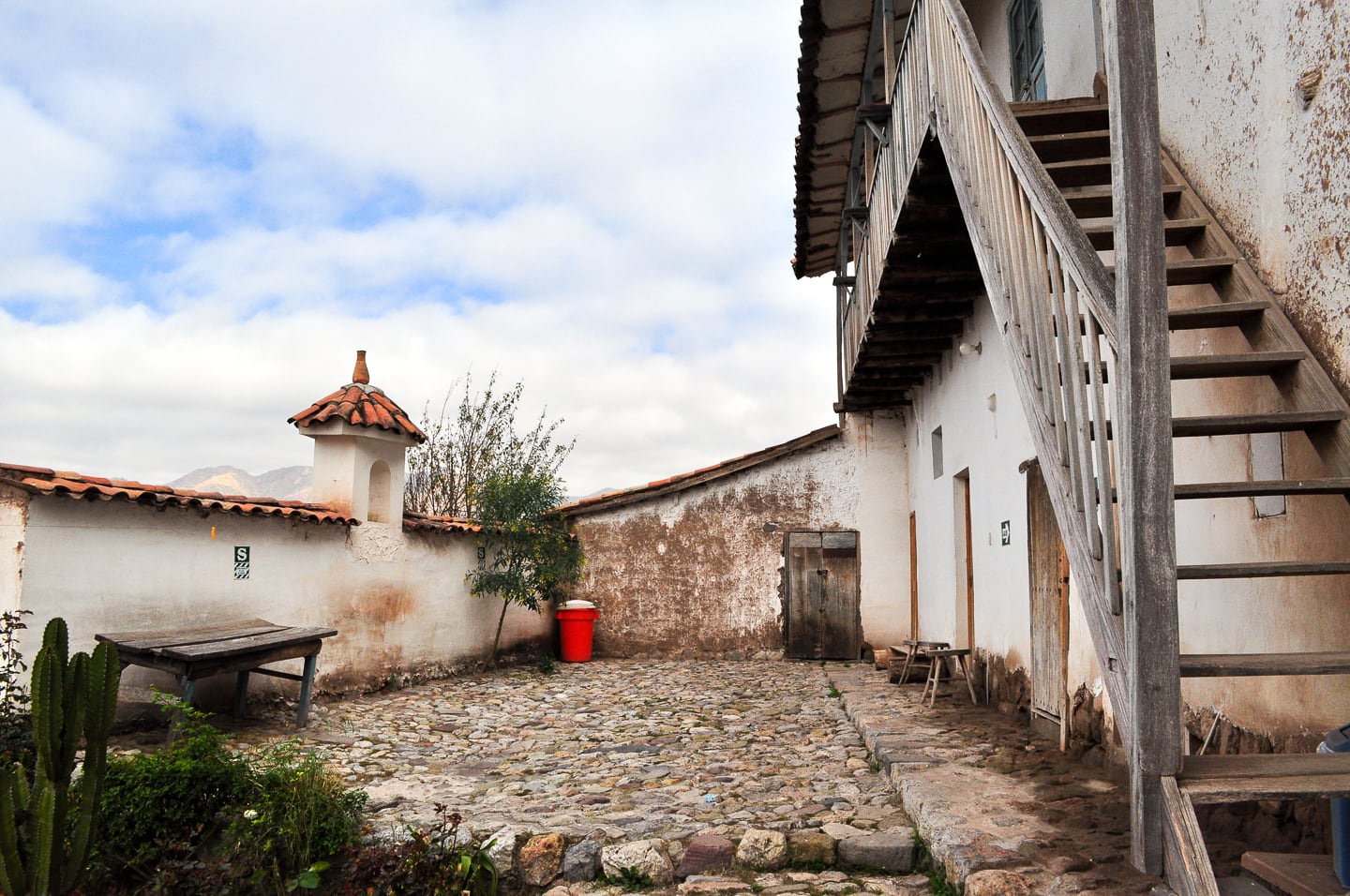
One story from our hostel in Cuzco: As we were walking back one evening, a wonderful aroma greeted us half way up the steep cobblestone street leading to our hostel.
We were very pleased to find that the smell was coming from our hostel, but quite surprised when we discovered the source.
We entered the courtyard of the hostel to find a large circle of dreadlocked free-spirits and Peruvians singing songs as a couple of the largest rodents I’ve ever seen rotated slowly and silently on a spit over an aromatic woodfire pit.
The creatures were absolutely hideous, rigormortis having set in at the seemingly absolute most unflattering time.
Nothing like skinned, spread-eagle guinea pigs rotating on a stick to whet your appetite, especially when you happen to catch them staring back at you with a look of absolute horror in their faces, the sort of facial expression that conjures up Dante’s inferno or Pompeii casts of bodies frozen in time from a sudden excruciating death by molten ash.
My imagination couldn’t help but wander through a dark landscape of possible scenarios that might compel such a horrific last expression.
Though cuy (guinea pig) may be the national meat dish of Peru, Lori and I had no choice but to pass on these two critters (sadly, no photos either…sorry).
Instead, please enjoy a lovely one of Lori standing in the hostel’s communal kitchen:
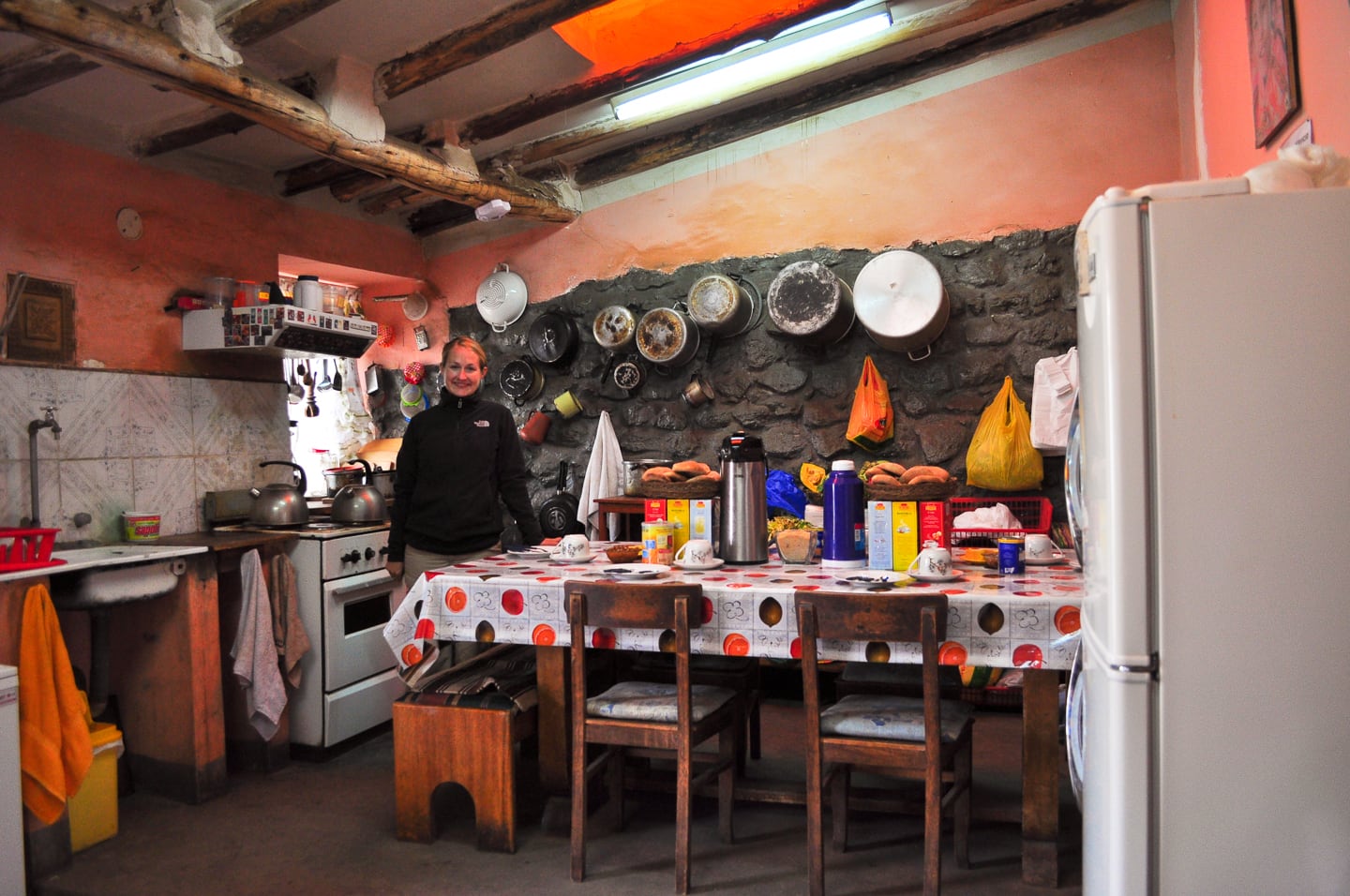
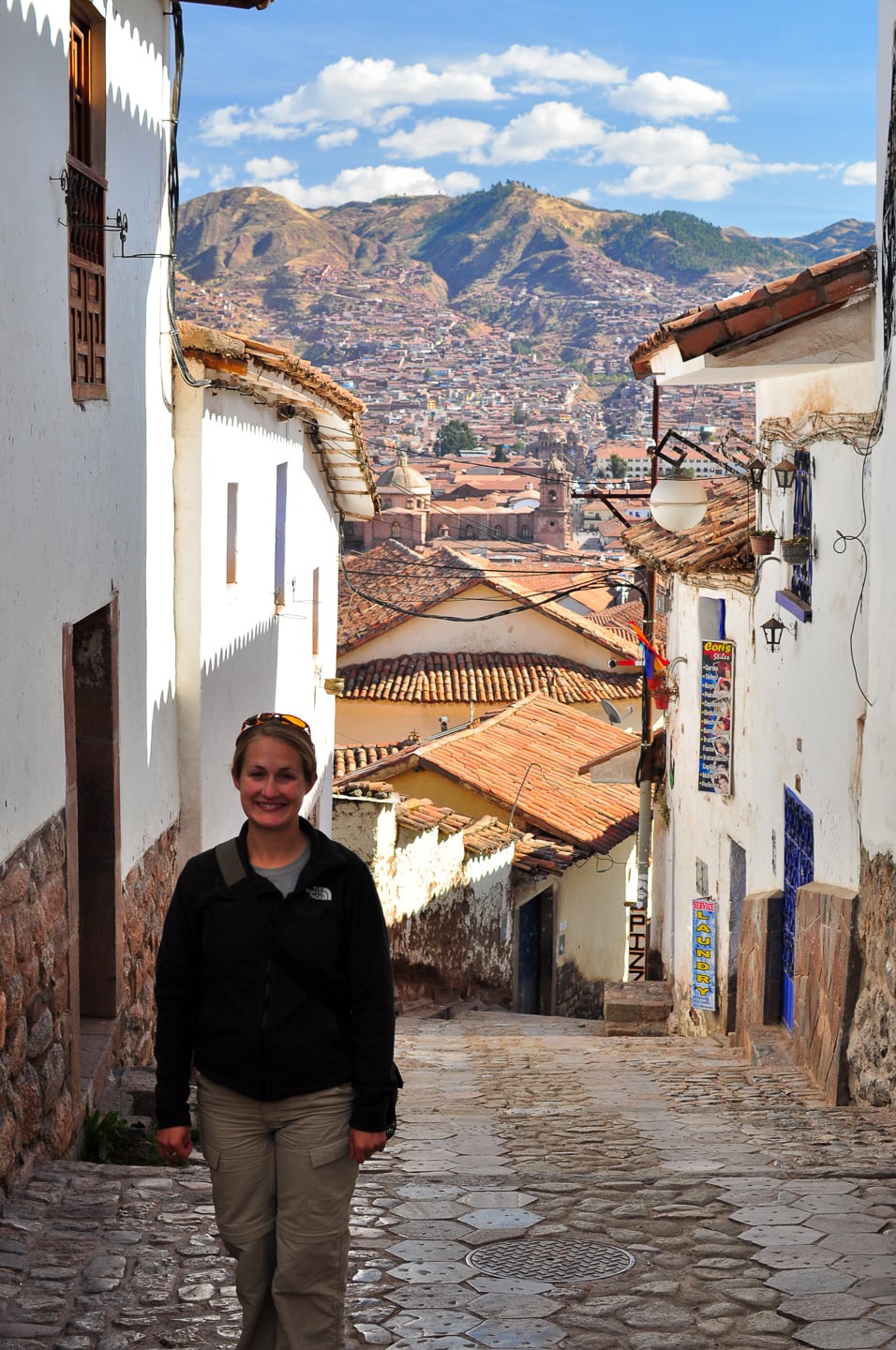
San Blas Neighborhood
San Blas is just a really awesome neighborhood for wanderers and curious travelers.
It’s artsy, historic, quaint, quiet, yet full of energy, enthusiasm and funkiness. It’s a tangle of winding pathways and roads lined with weathered cobblestone and hidden shops and restaurants.
We were constantly coming across some restaurant or shop that we hadn’t noticed before, or down some hidden alleyway not previously explored.
One word of caution: San Blas is located on the side of a hill, which only adds to the romantic and evocative aspects of the neighborhood, but we definitely got a workout exploring the area. Well worth it.
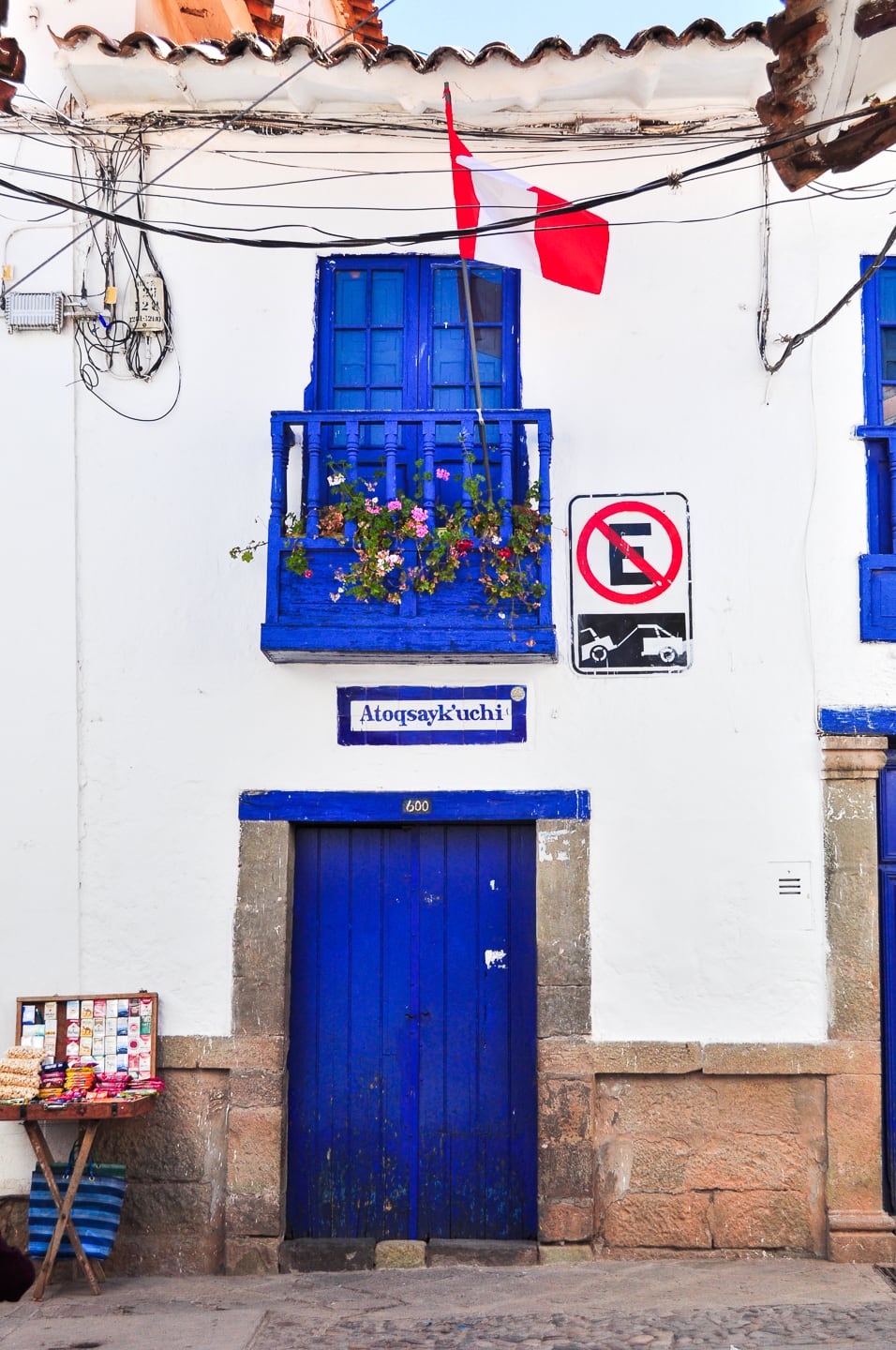
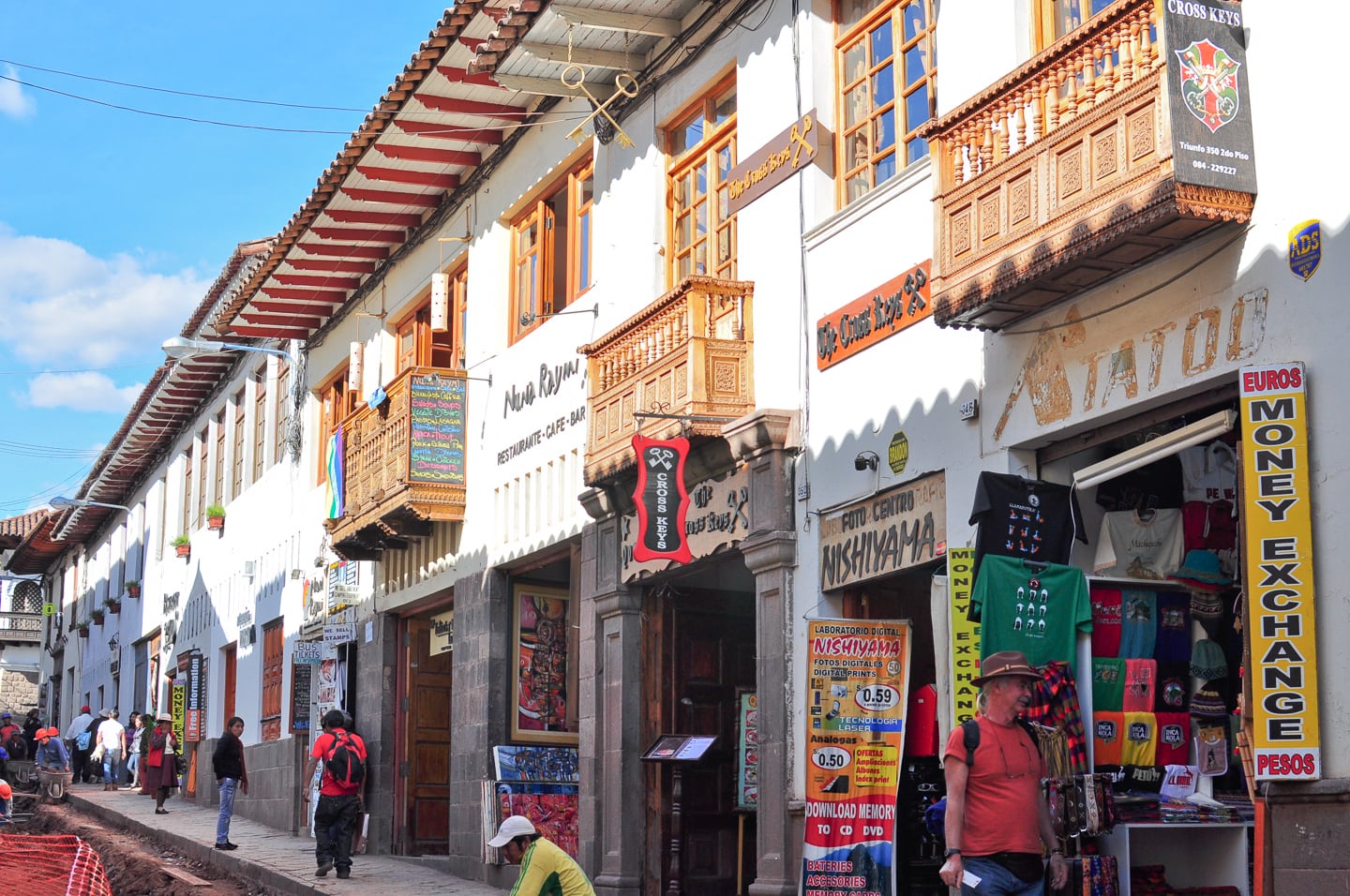
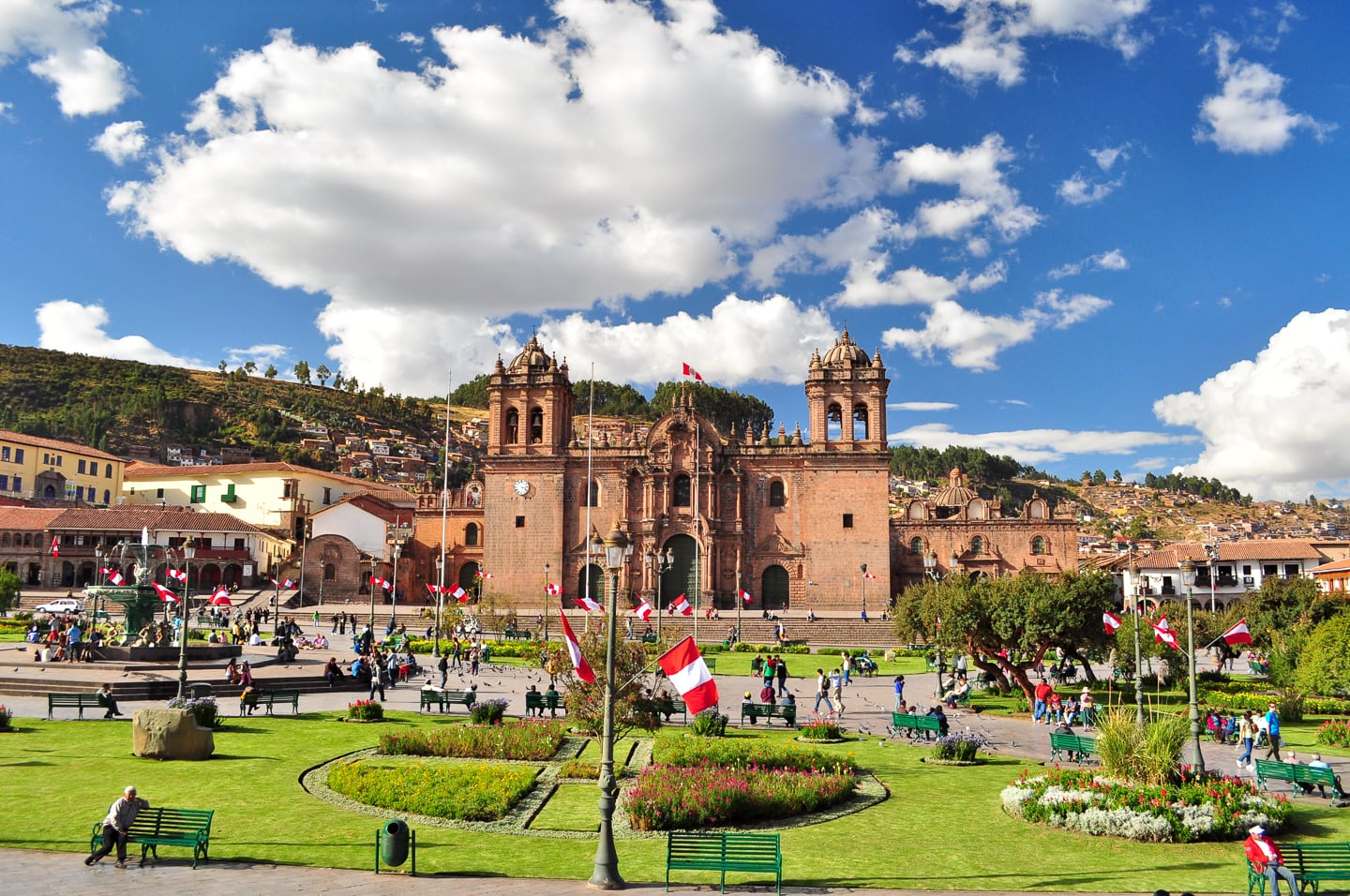
Plaza de Armas
Cuzco’s Plaza de Armas (above) as viewed from the second-story balcony of a small, funky cafe we grew to love. Peru flags are up in preparation for Peru Independence Day, less than a month away!
Since reading about Cuzco’s sights, I’ve been very excited to finally lay eyes on the giant rendition of the Last Supper hanging in the cathedral with a cuy (guinea pig) at the center of the action, standing in as Jesus’ last meal.
The guidebooks really play this up, so you can imagine my disappointment when we discovered that, according to the actual painting’s caption, while resembling a cuy Jesus is actually salivating over a vicuna (a small deer-like animal), a noble catch, and quite frankly NOT anything like a small rodent—completely ruining the irony for me.
Sadly, it wouldn’t be the last time our guidebook would mislead us on this trip.
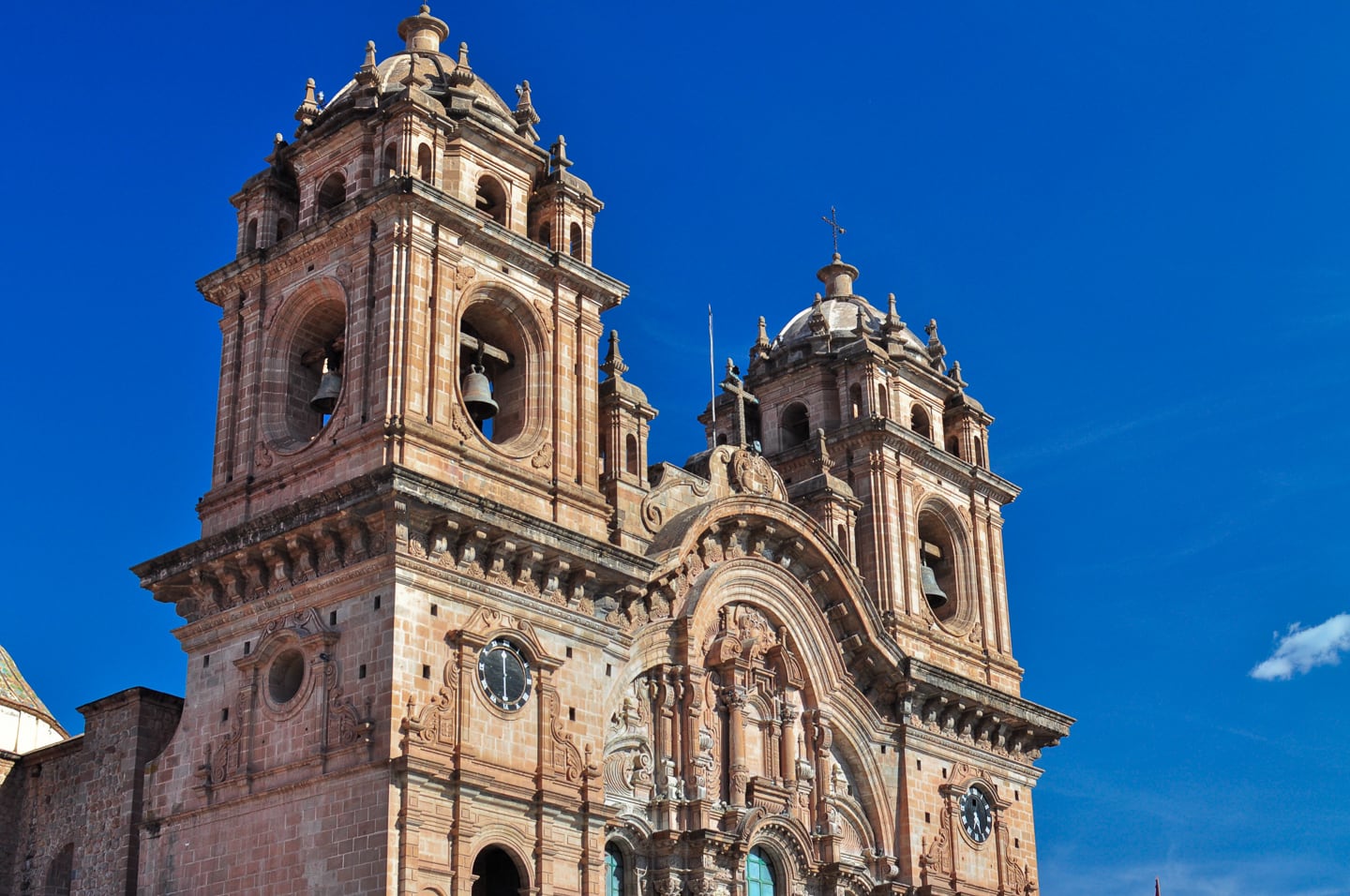
Many travelers seem to really rip on Cuzco, claiming it is over-run with foreigners and ultra touristy, which indeed it is near the main square.
I get the feeling that these same people spend the majority of their time in and around Plaza de Armas, in a loud, obnoxious party hostel, eating expensive international food, never really venturing to other parts of this really beautiful and diverse city.
We largely avoided spending time in the Plaza, venturing up into the hillside shanty towns, and neighborhoods down around the train and bus station where Peruvian life rolls along in parallel to, yet detached from, the throngs of tourist in the center, and we were greatly rewarded for this.
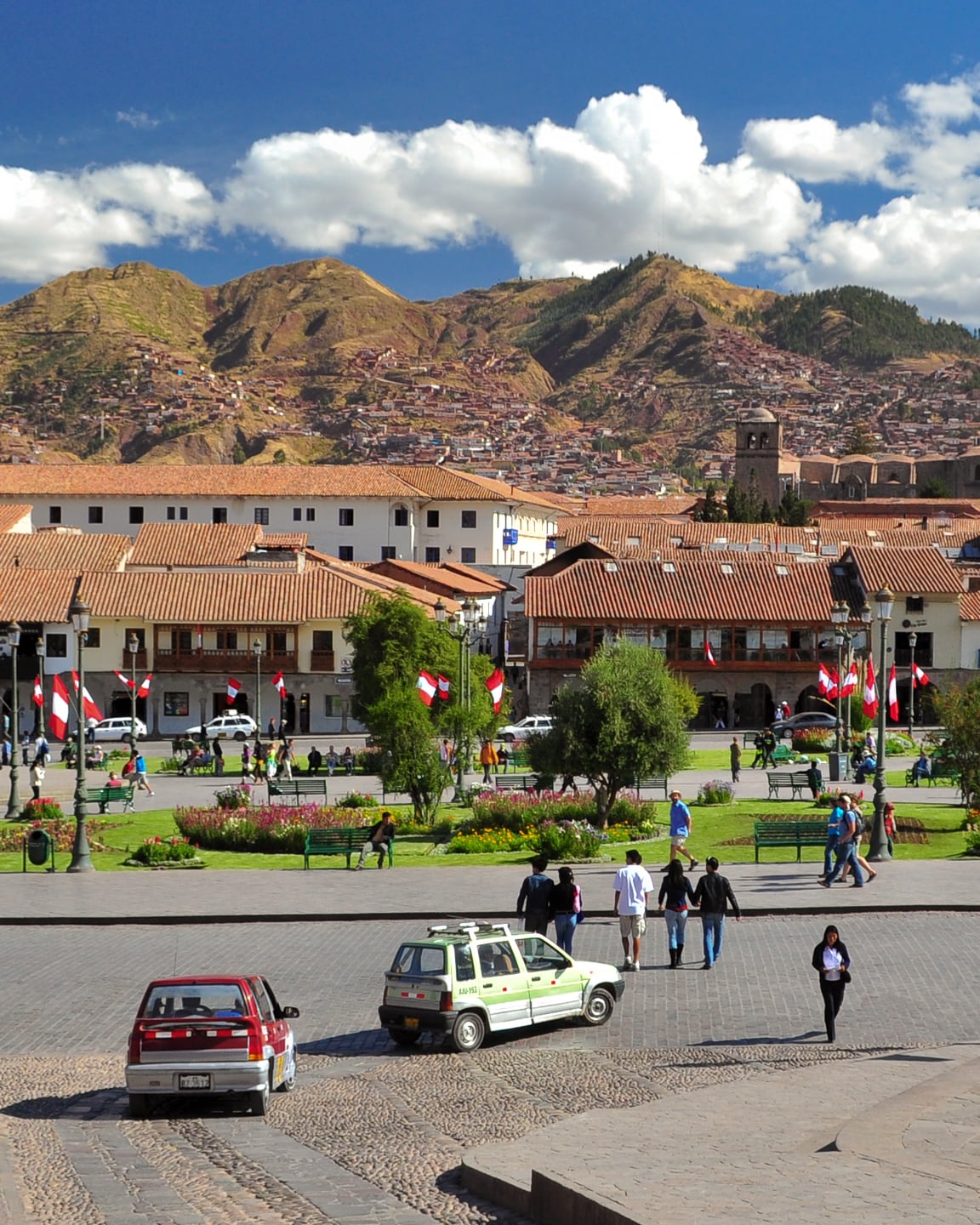
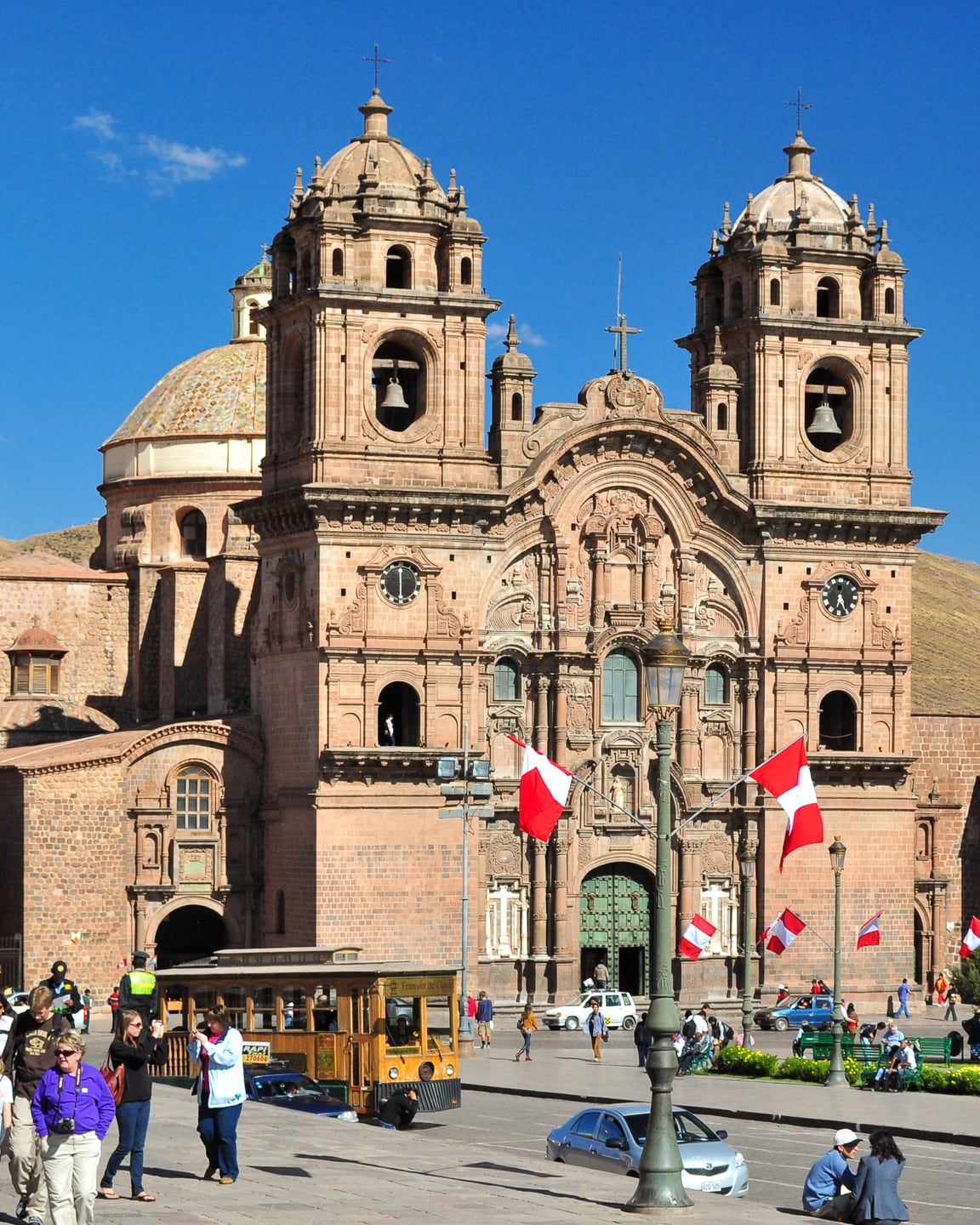
A lot of foreigners assume that Machu Picchu was the capital of the Inca Empire, perhaps due to its importance or the publicity it has garnered since its uncovering in 1911 by the American historian Hiram Bingham.
Furthermore, when Americans think of great gold-gilded cities sacked and pillaged by the Spanish in the 1500’s, imaginations wander to Machu Picchu.
In reality, during the entire 400 years of colonization, the Spanish never knew of the Inca spiritual center of Machu Picchu, which was neither an administrative capital nor covered in gold.
The grand city of Cuzco is in fact the grand city of gold that the Spanish conquered and stripped of its riches, and it is from this city in 1533 that the Spanish administered their control and conversion to Catholicism of their Andean empire.
They leveled the most beautiful and impressive of the grand temples and buildings, erecting the churches and cathedrals of present-day Cuzco atop the rubble.
In many ways, this is why Machu Picchu is so special, because it is not only the religious center of the Inca, but one of the only intact and unadulterated cities of the Inca.
Cuzco, however, has a rich and fascinating history all its own that we enjoyed immensely.
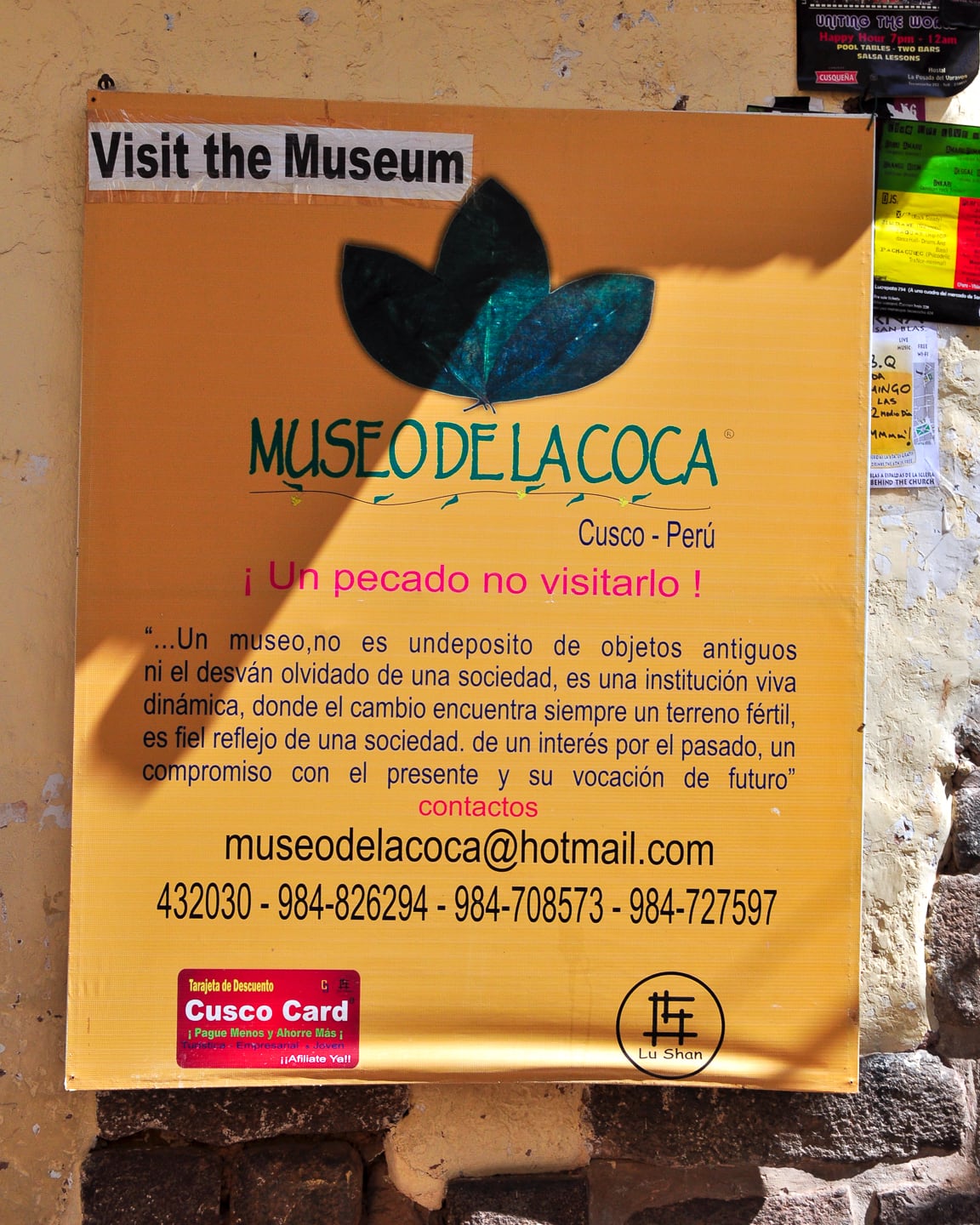
Coca museum! We didn’t actually go to this one, but did enjoy the one in Puno, which is very well done and gives you a good sense of the enormous significance of this stimulating leaf in Andean culture.
The Inca Empire was practically built by coca’d-up Inca laborers who apparently took great joy in their work (you probably would too…).
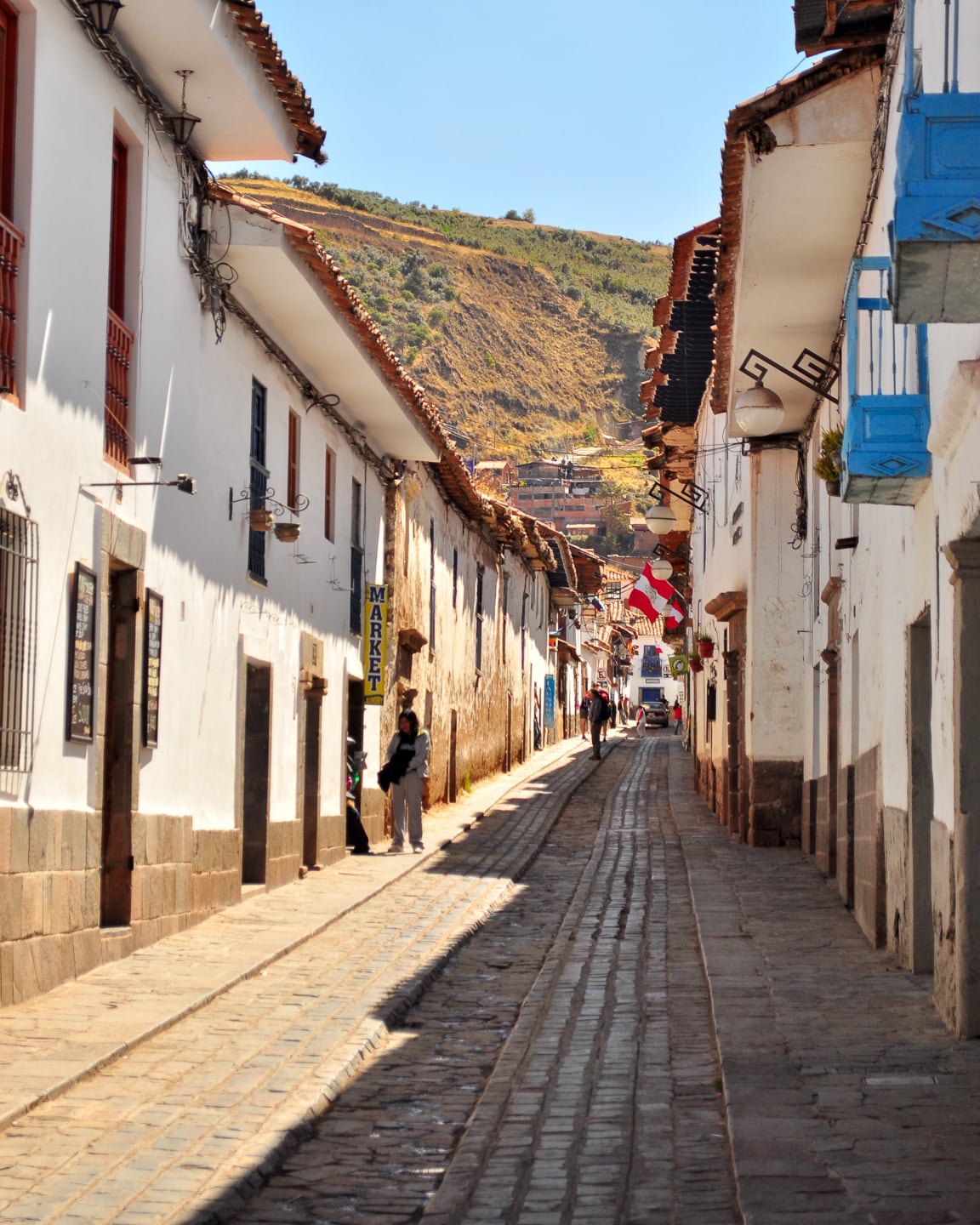
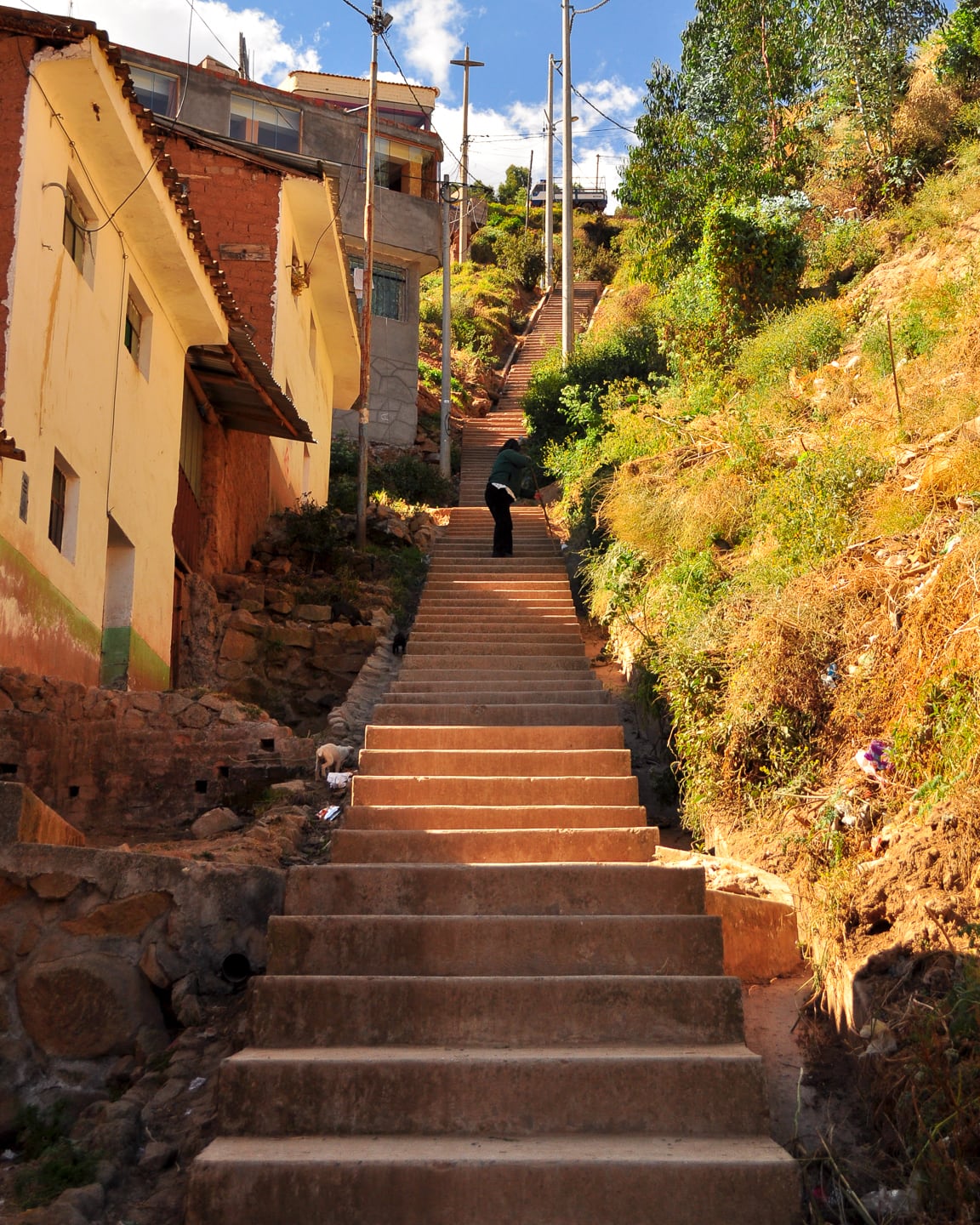
Climbing Up to Cristo Blanco (White Christ)
Lori and I have this nasty habit of seeing something cool high up on a hill and wanting to touch it. In this case it was a huge white Jesus. It looked really far away, and we weren’t sure how exactly one visits Jesus (or at least this Jesus).
After roaming around a neighborhood for a bit, we came upon this staircase. Long staircases are always promising in Catholic countries because chances are, they’re eventually going to lead you to either a big huge Jesus or a somber Mary.
So we climbed, and we climbed, and we climbed…justifying our insanity by reminding each other that it was good training for the Inca trail…which it was.
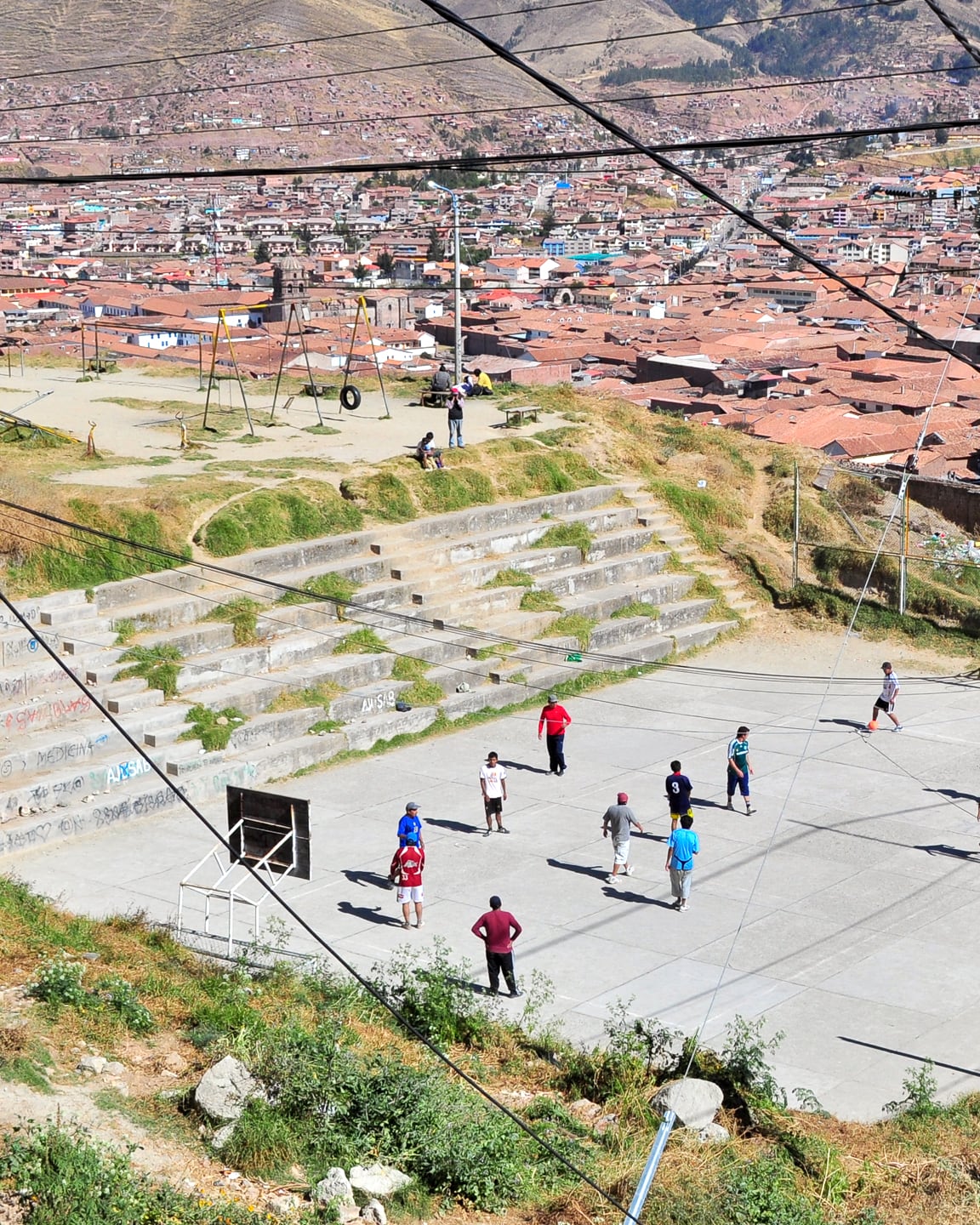
Along the way, we passed very different vignettes of life than one would expect to find in the valley where the touristas dwell.
Shanties and lean-tos, goats and llamas grazing, and impromptu soccer matches playing out on any flat surface the steep hillsides afforded.
We also saw the devastation left in the wake of the torrential rains and flooding that occurred earlier in the year, and a lot of construction and jimmy-rigging as a result.
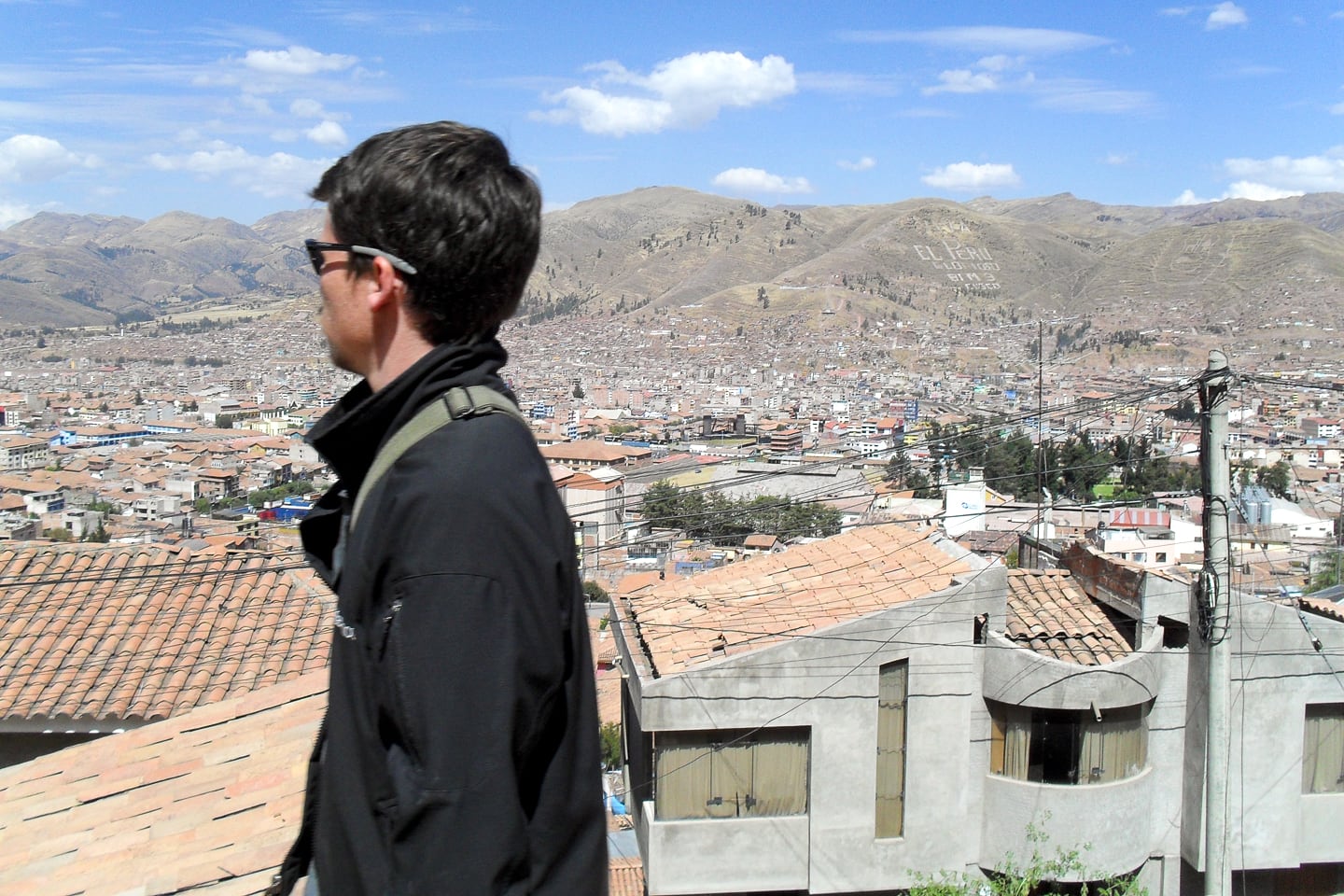
Taking in the view of a large city spilling out of a narrow valley.
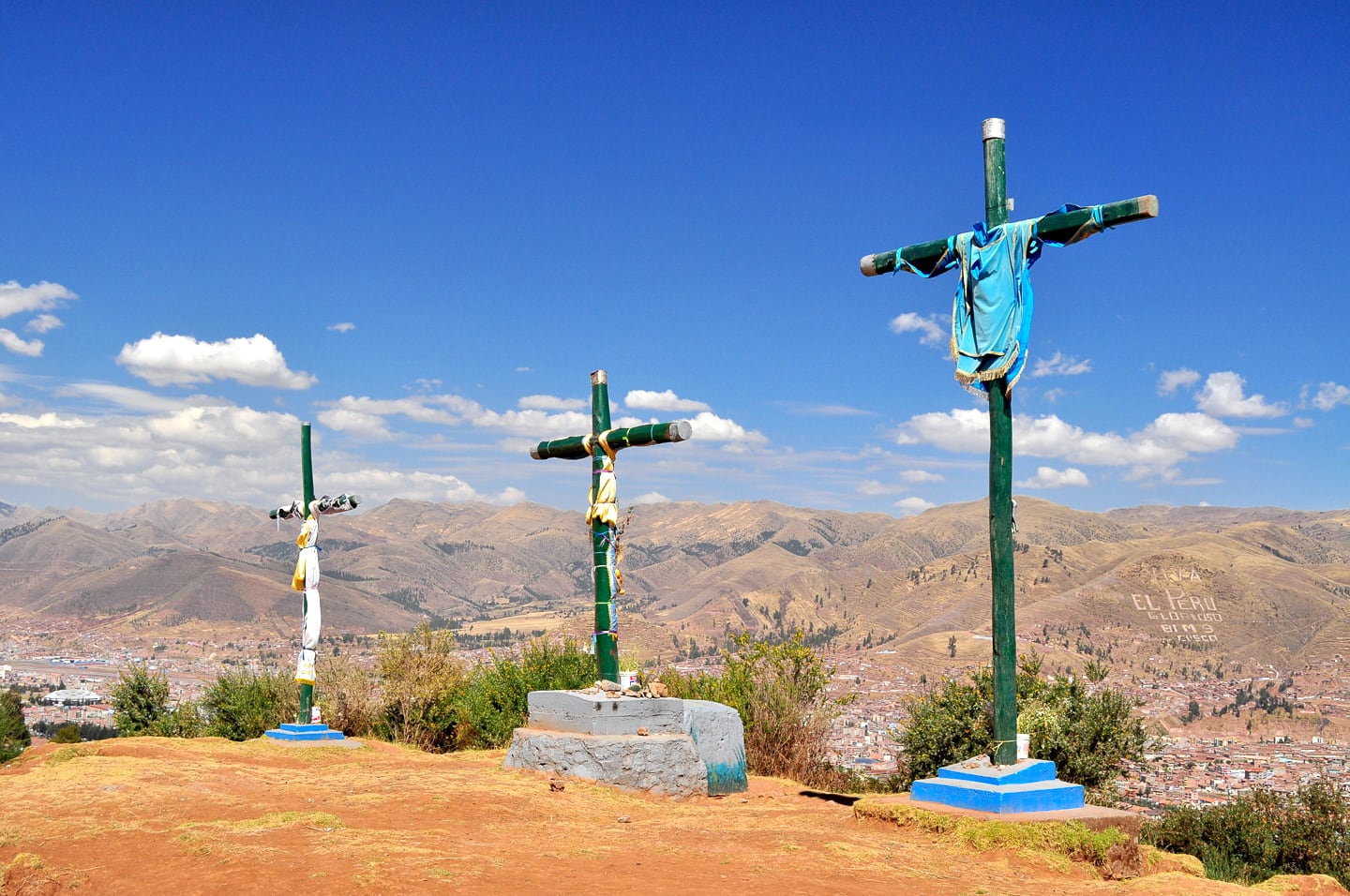
Nearing the top! – Not Jesus yet, but something tells us we’re getting close…
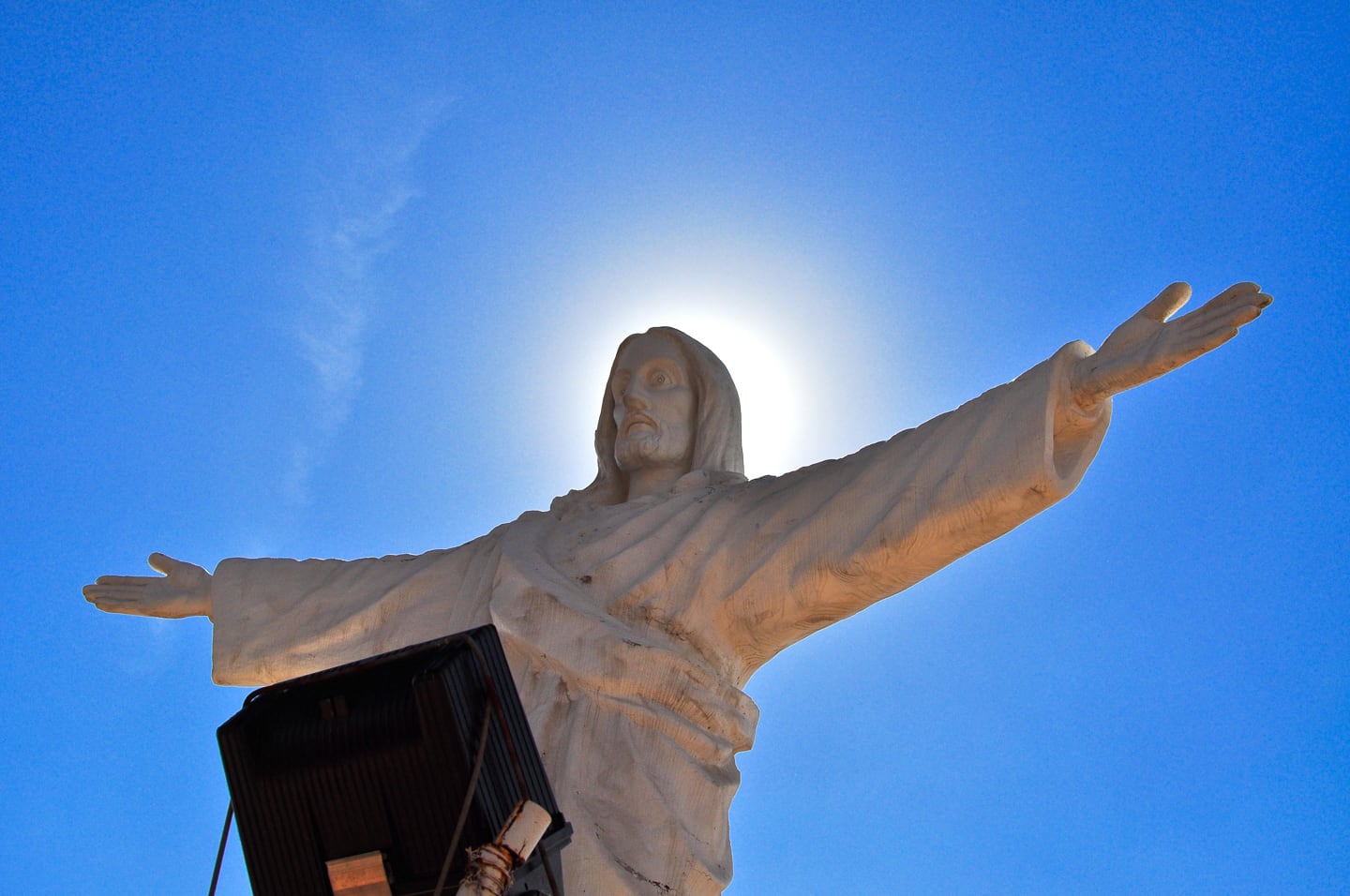
And there He IS! In all the pomp and splendor you’d expect from a seriously Catholic nation.
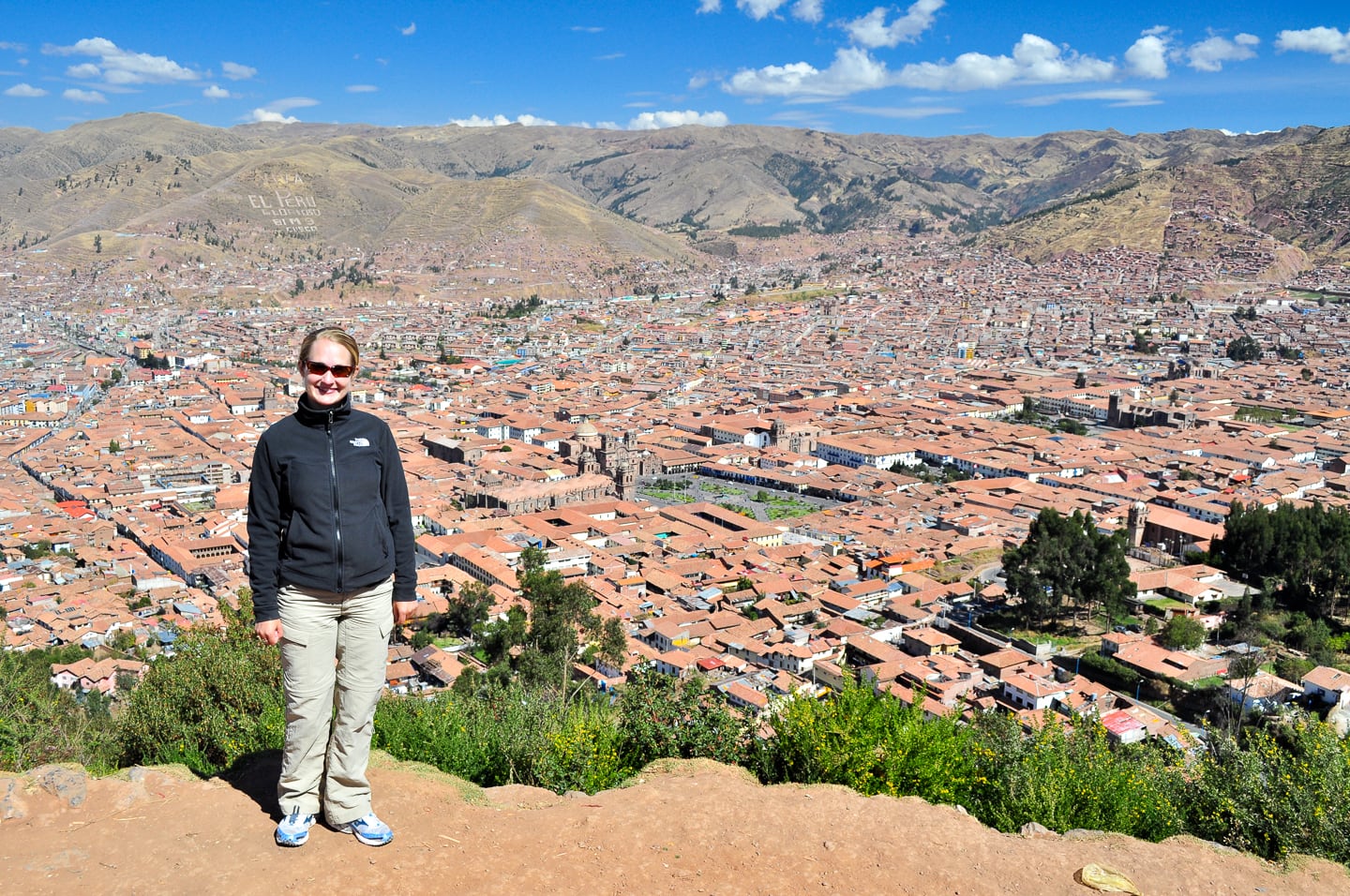
Jesus, that’s some view!
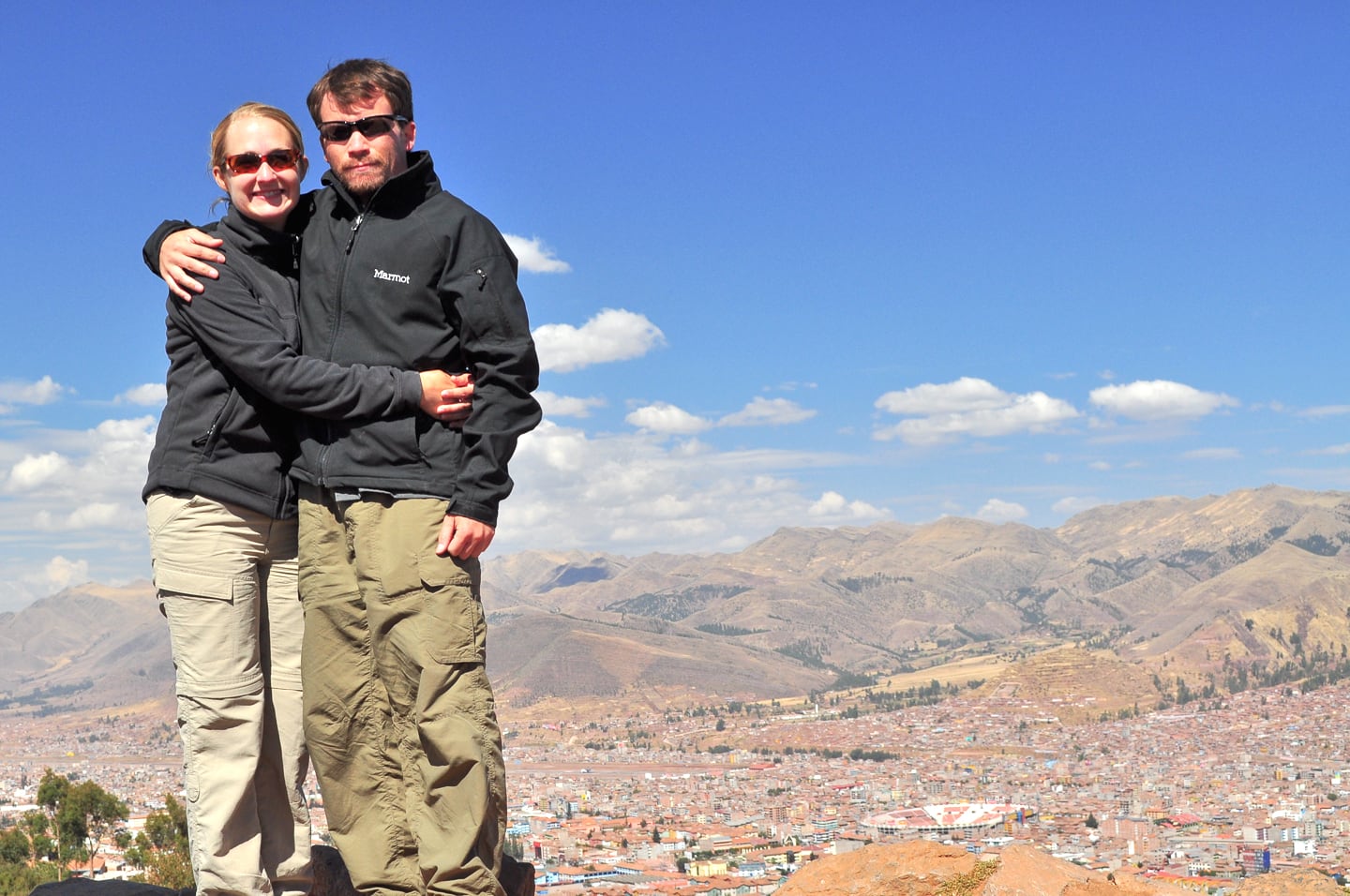
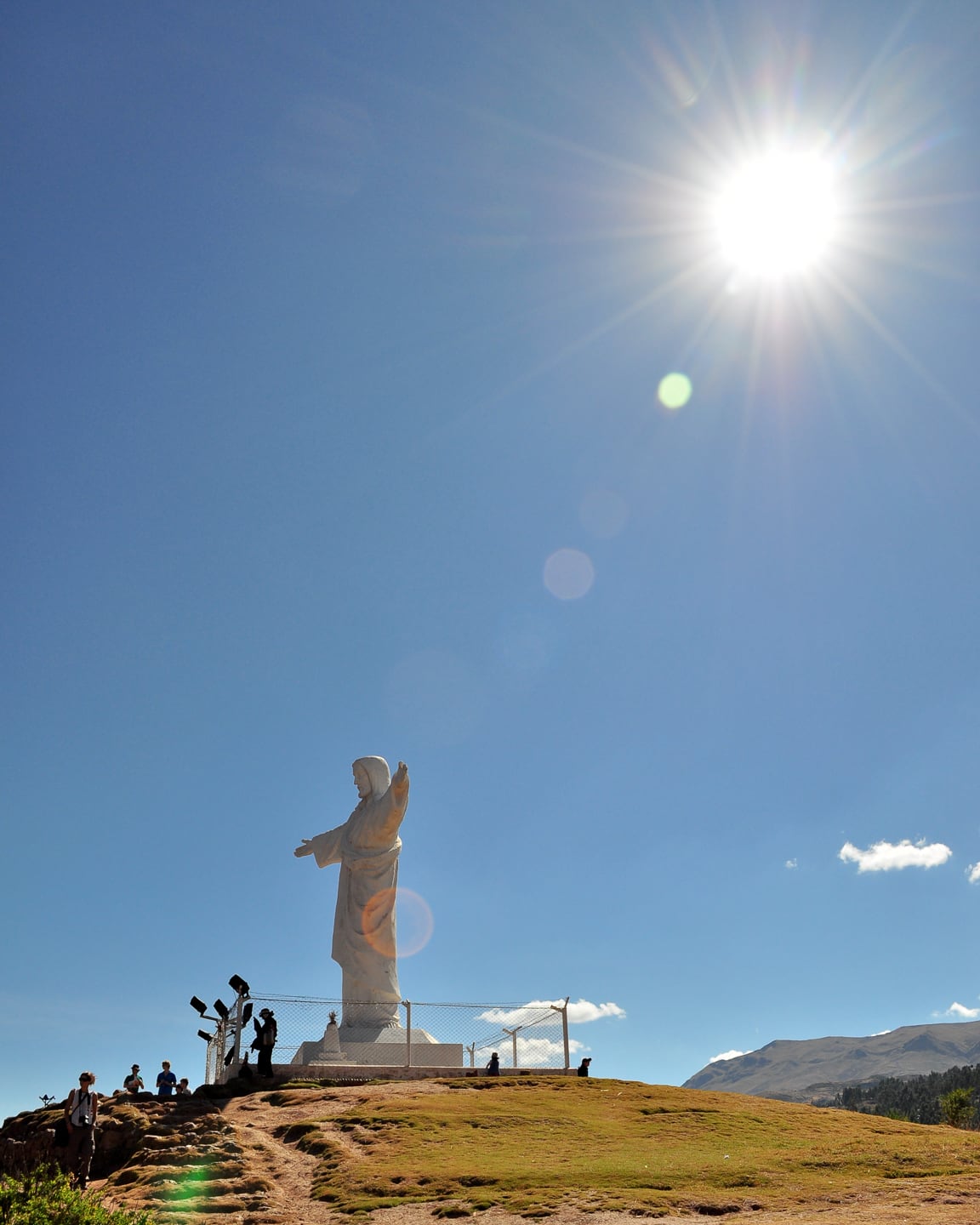
At first I thought, “Jesus, your arms must get tired!” But then I remembered, we are talking about Jesus here.
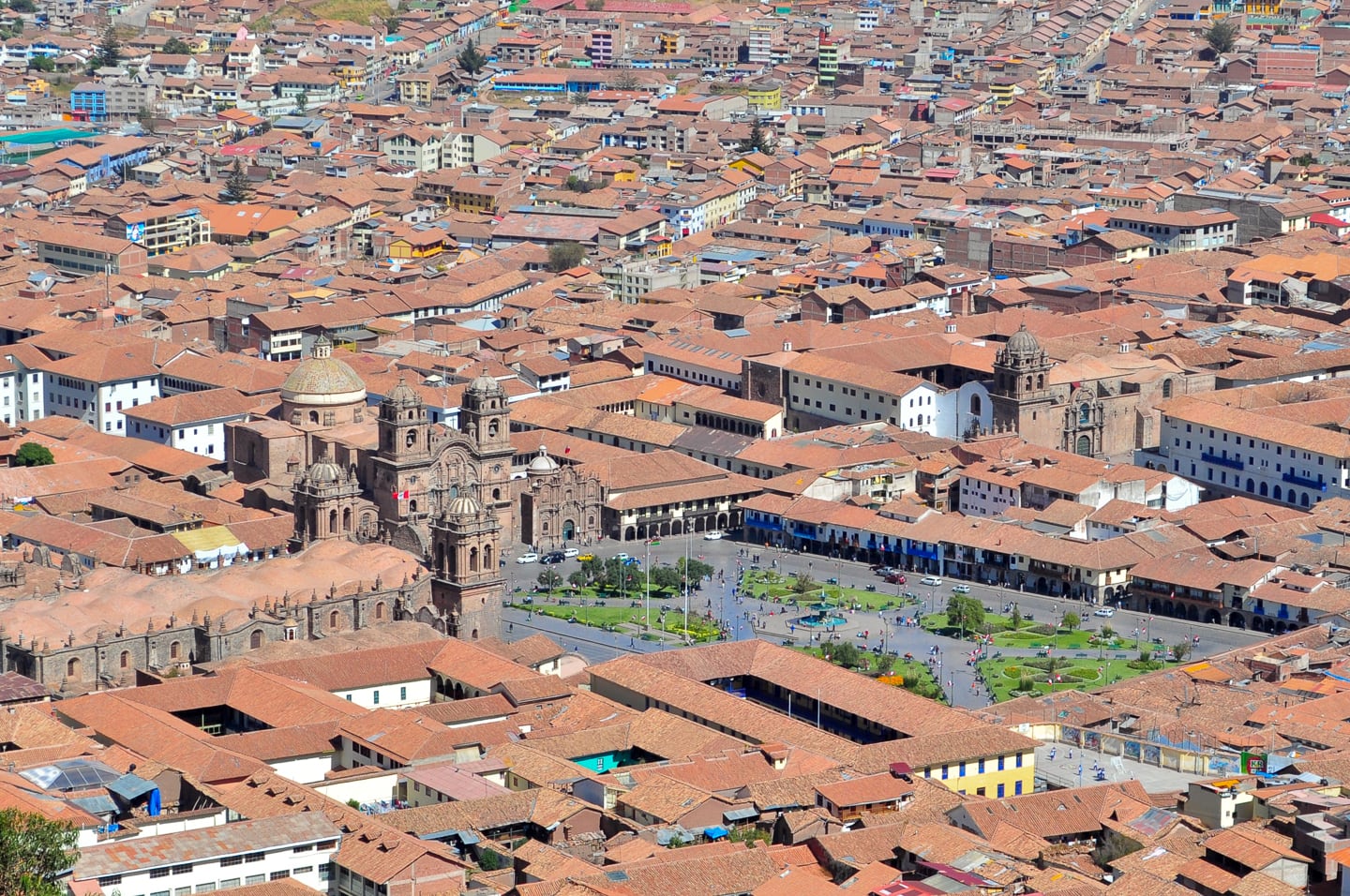
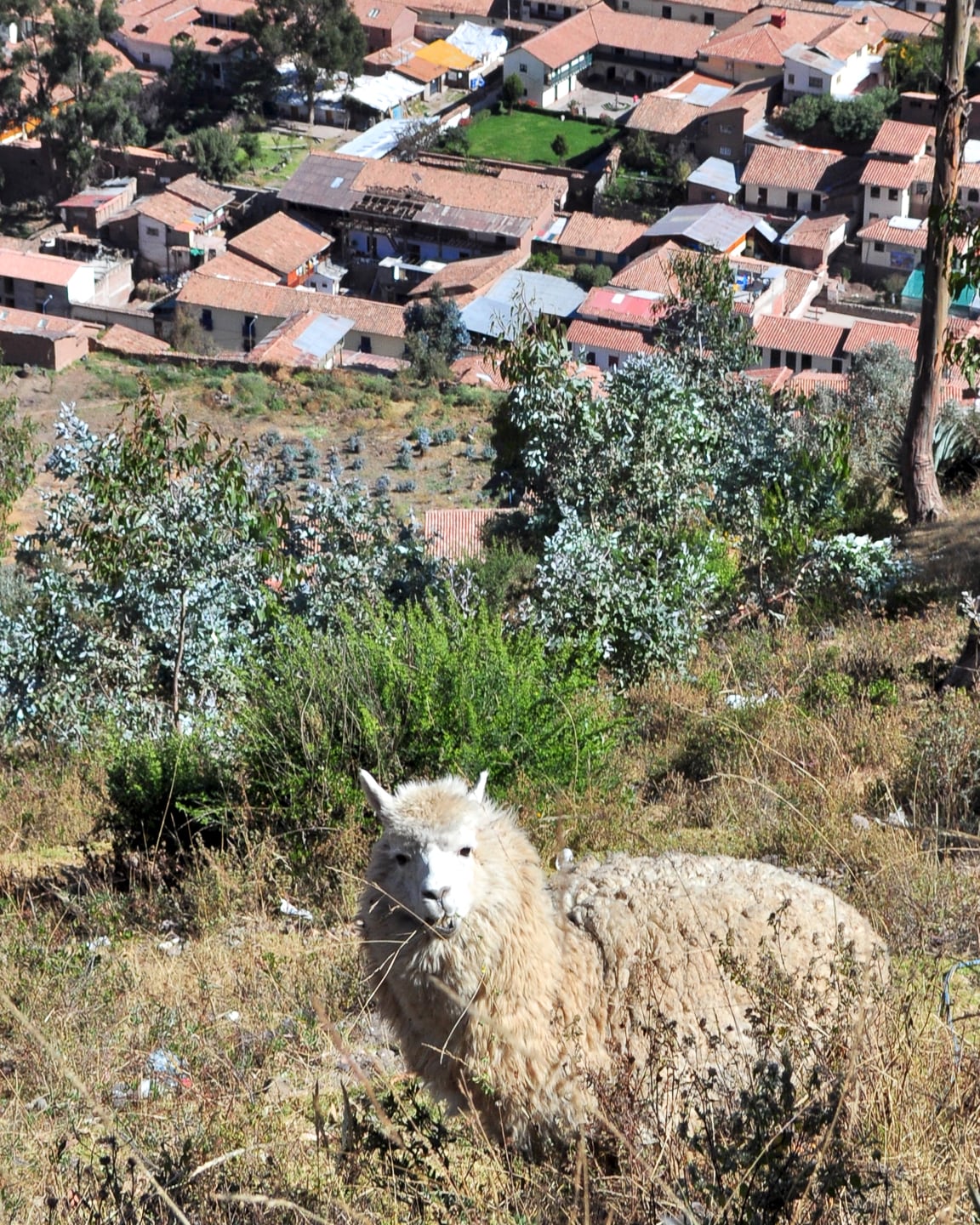
“Alright Lori…on the count of three…maintain eye contact and back up very, very slowly.”
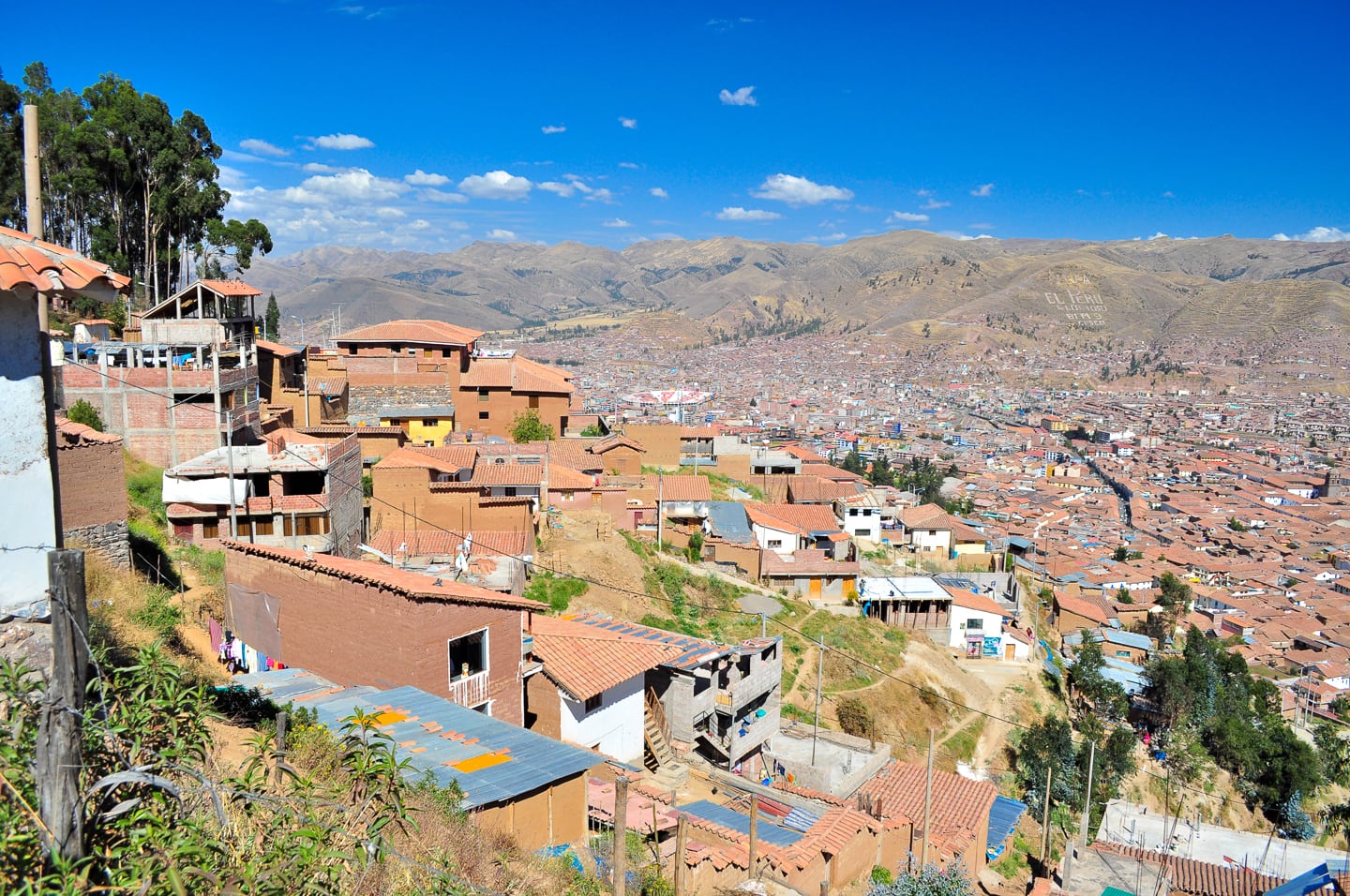
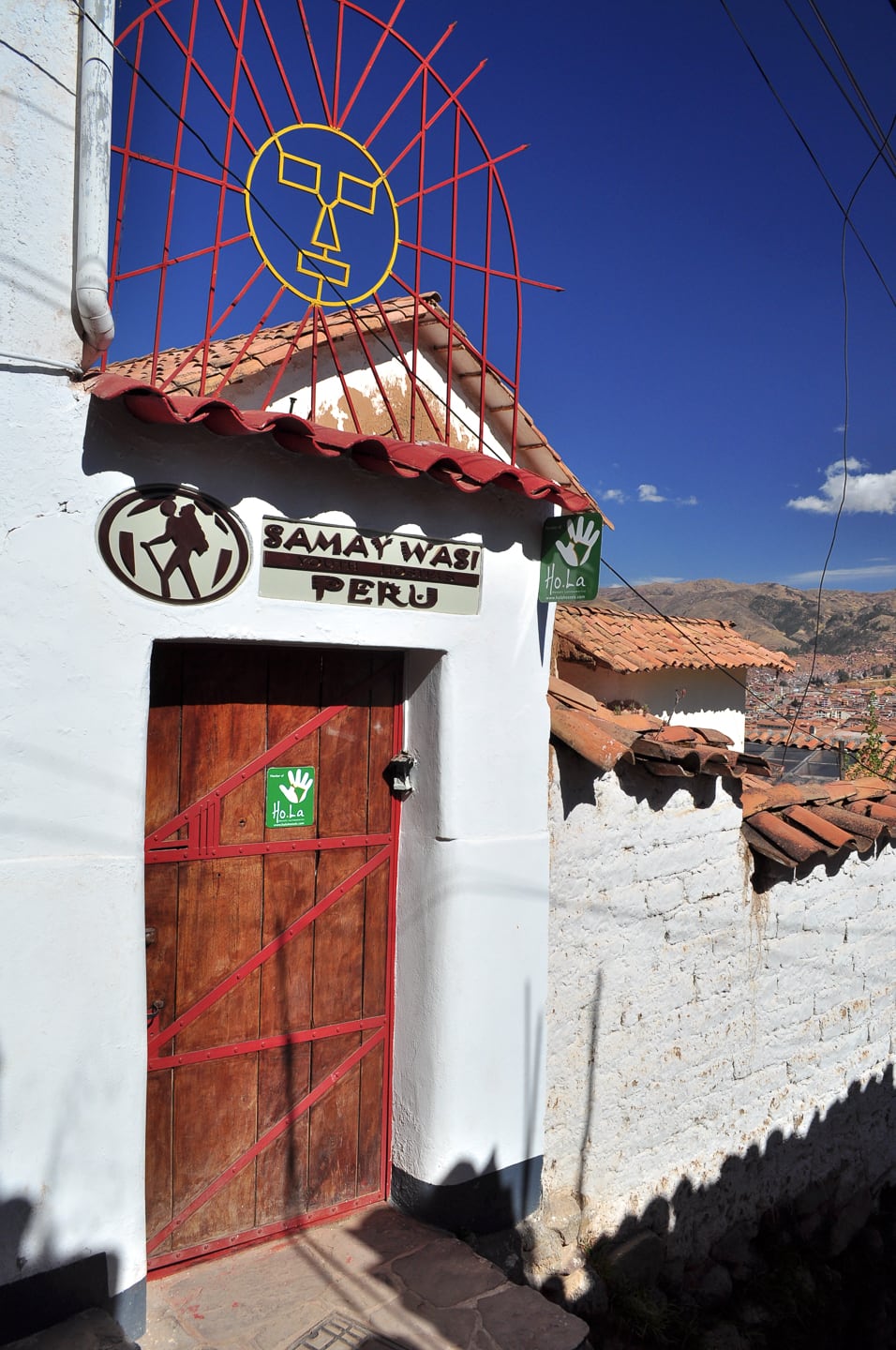
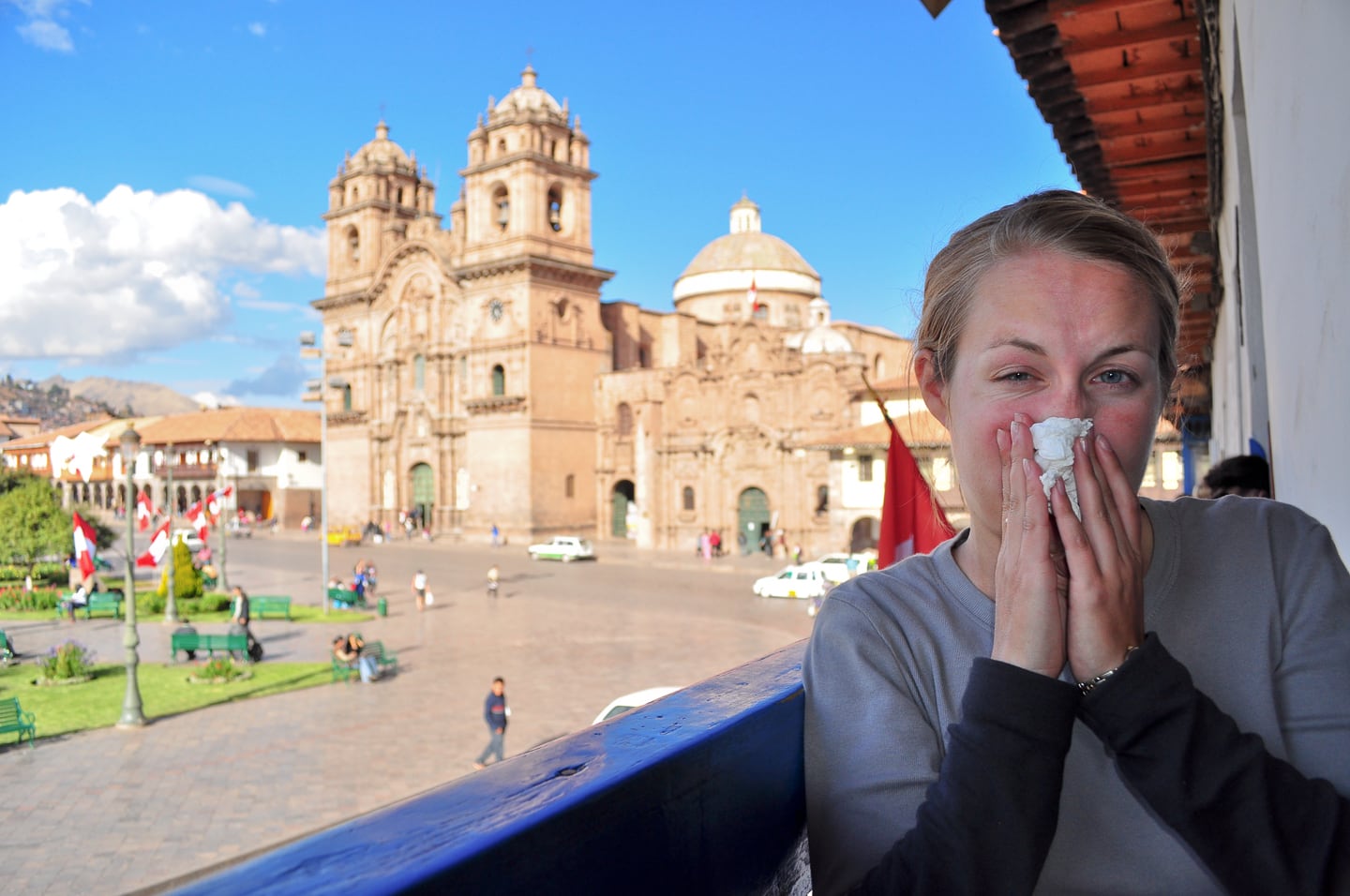
Final Thoughts & Observations
The altitude (so we think) played havoc on both of our schnozes throughout the trip. Lori, especially, suffered from a runny nose for most of our time in Peru.
We single-handedly managed to keep the Peruvian tissue industry in business and became experts at being able to find amazing nose-blowing potential in a variety of everyday items.
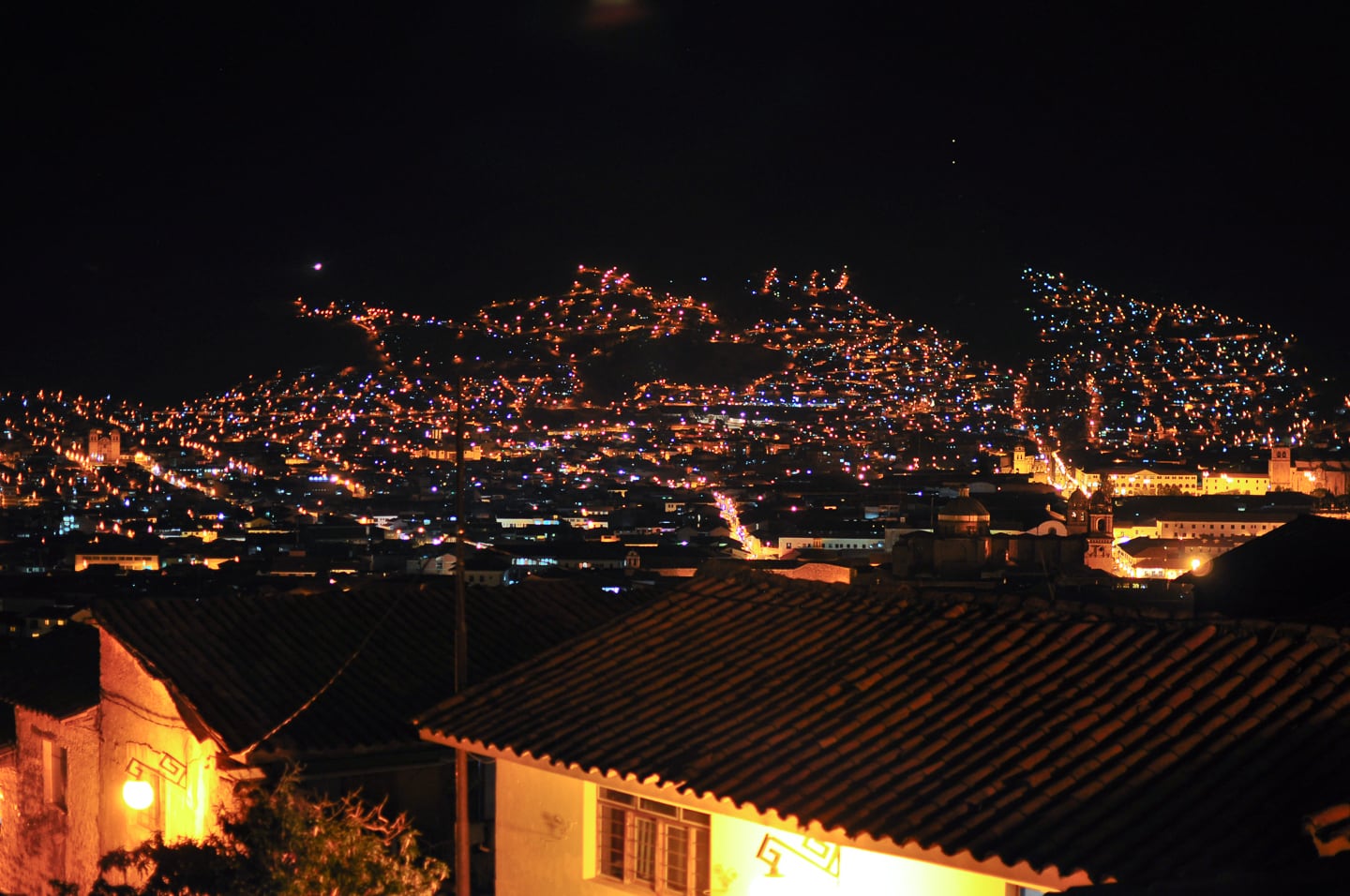
Cuzco by night (from the patio of our hostel). Kind of looks like a giant guinea pig lying on his back, doesn’t it?
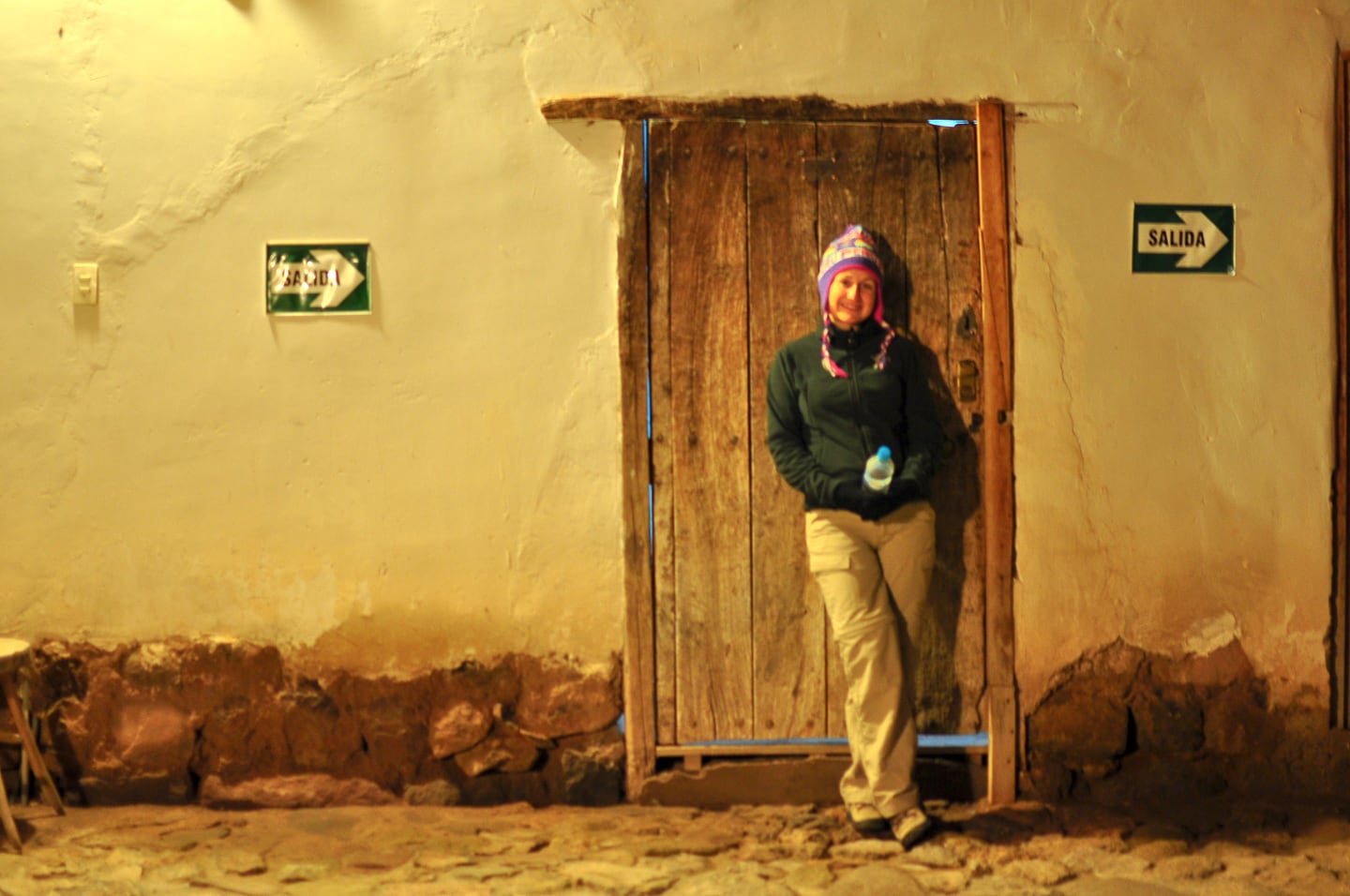
Throughout our trip we’ve strived to maintain a balance between urban and rural travel, and we both feel like we’ve been able to do that so far.
Lori and I tried to establish a pattern, of staying in a city for a couple of days, then venturing out to some nearby rural area with far fewer amenities and more physically demanding outdoor activities before returning to the city to relax in cafes, wash clothes, and enjoy amenities such as electricity, urban foods, internet, and cosmopolitan luxuries.
We’ve found that by doing this, we very seldom tired of any one particular area or activity, and more thoroughly appreciated where we were and what we were doing at any given time.
Thanks for joining us on our trip around the capital of the Inca empire!
Next up: The Inca Trail.
But until then, here are some Spanish (Peruvian) phrases you might enjoy…
Peruvian Spanish Phrases
“Saque las unas!”
(take out your nails…the translation of “hang on” during a cheesy action movie shown on one of our bus rides)
“Yema Dorada”
(literally…hard egg yolk, an advertisement for an unknown service spotted on top of a taxi in Arequipa)
“El baño es solamente para orinar, repito SOLAMENTE PARA ORINAR. Si tiene otras necesidades del bano por favor avisar el conductor para planear una parada especial”
(The bathroom is only for urinating, I repeat ONLY FOR URINATING. If you have other bathroom needs please advise the driver so he can plan a special stop)…in other words, don’t go numero dos in the bathroom or all will suffer! These instructions were in the pre-trip safety video on our luxury bus from Lima to Arequipa.
Also, they say “gaseosas,” not “refrescos,” for pop/soda, different than Mexico, same as most of Central America.
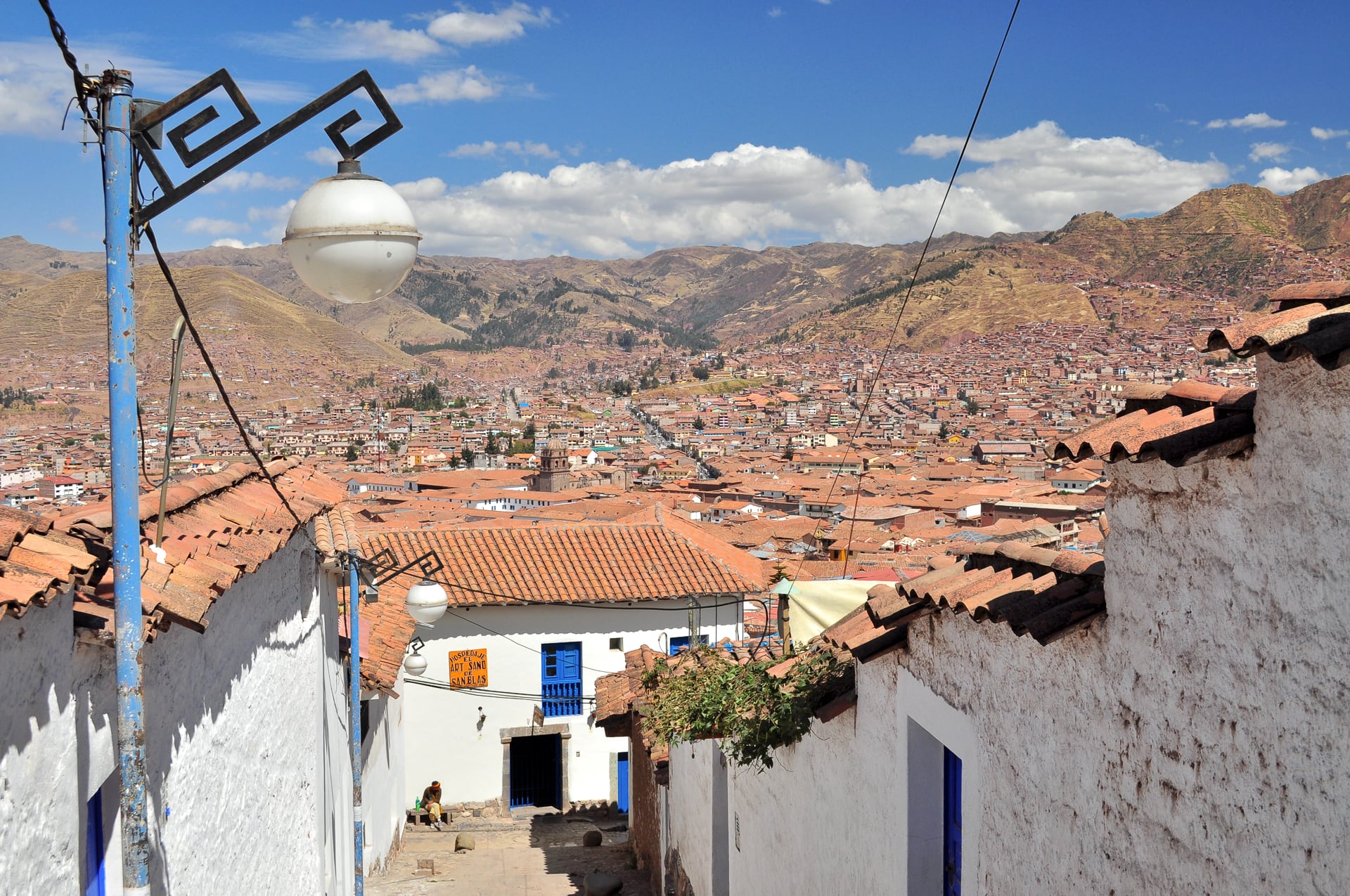
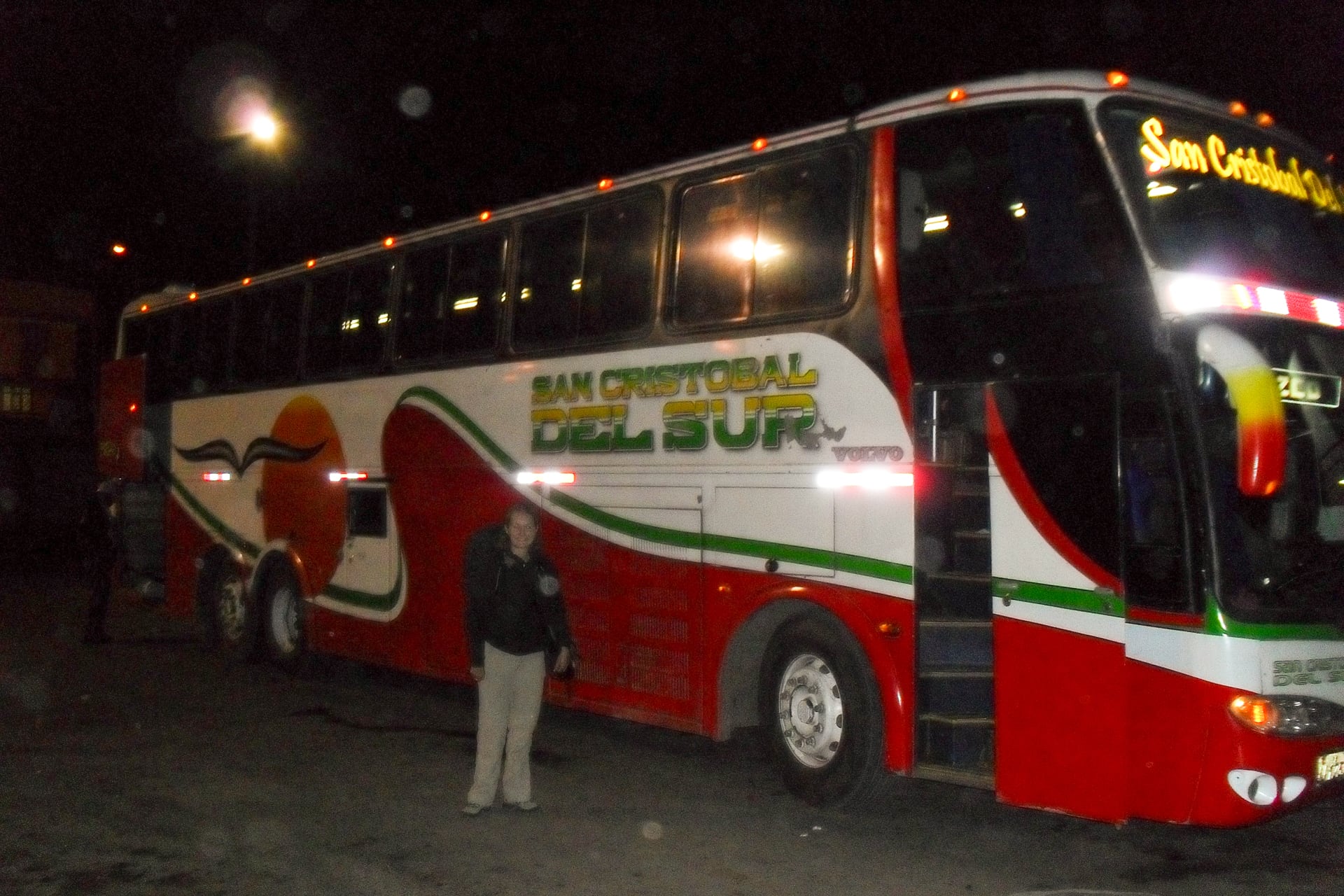
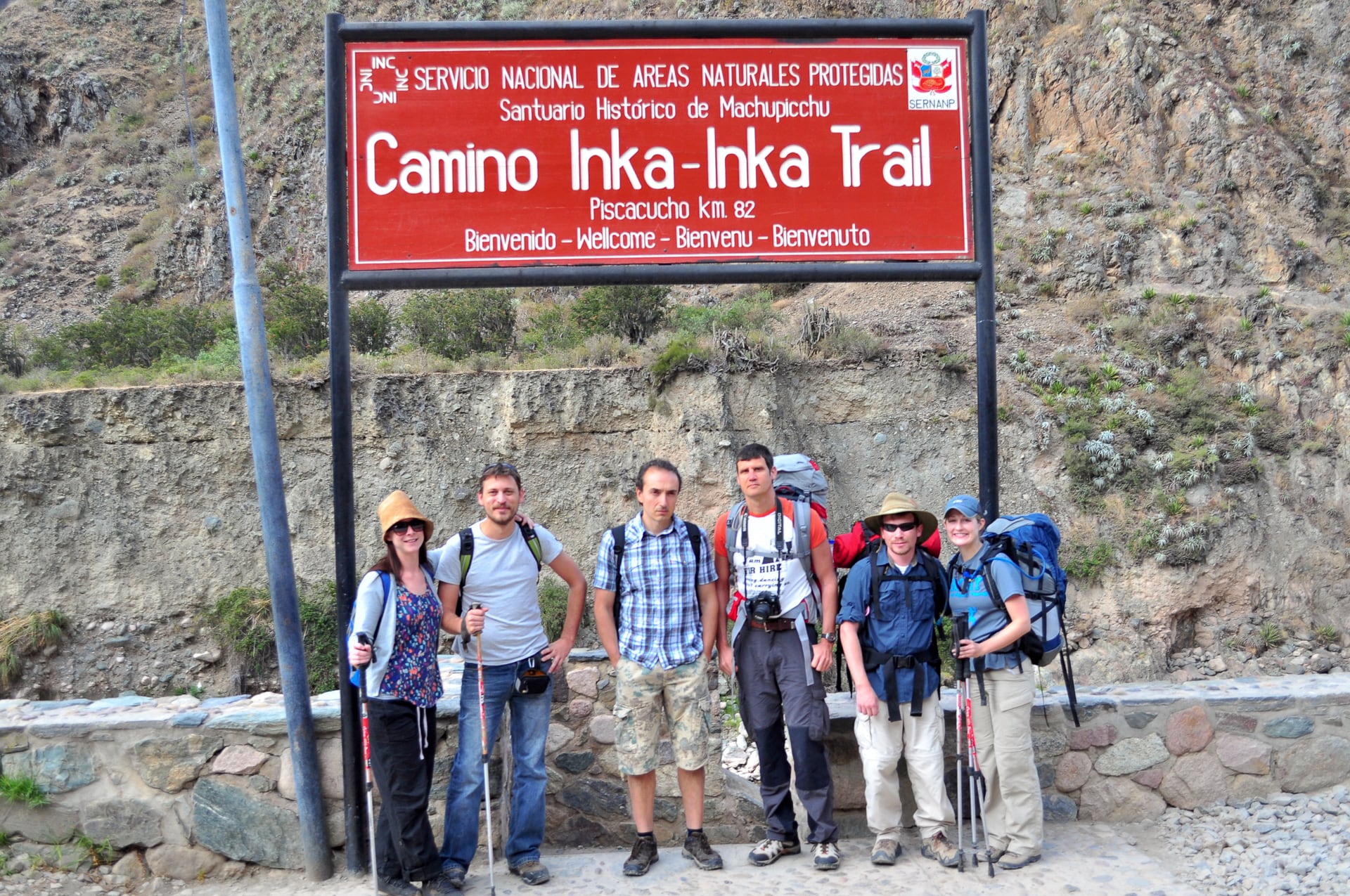
![Out of the World’s [2nd] Deepest Canyon peru-colca-canyon-ii-featured](https://www.hammockhoppers.com/wp-content/uploads/2010/07/peru-colca-canyon-ii-featured.jpg)
Me encanta!! This looks like such an amazing trip – Cuzco has so much personality. I love all the pics, particularly the ones of the city street and the city at night. Is that an indigenous language written on the blue door in the San Blas neighborhood?
Lindsay R.